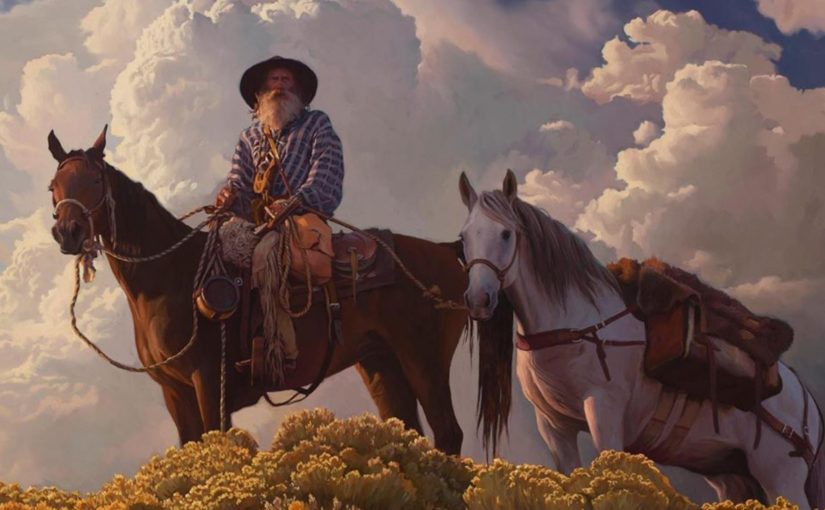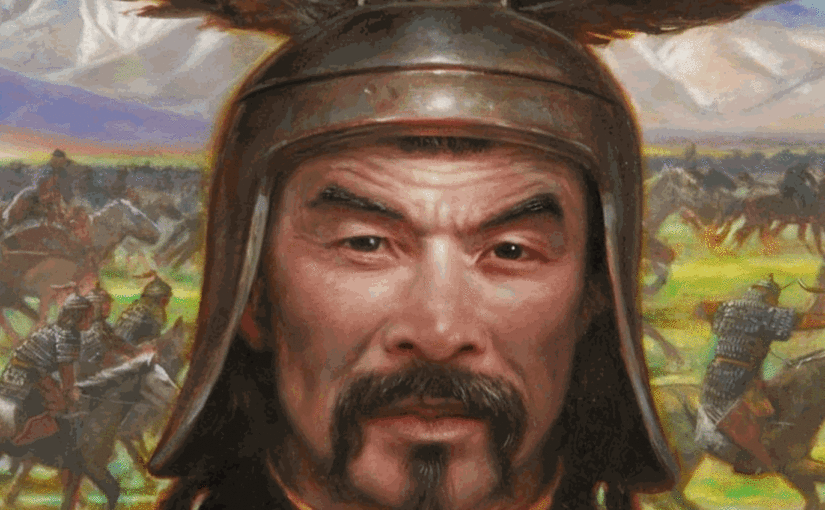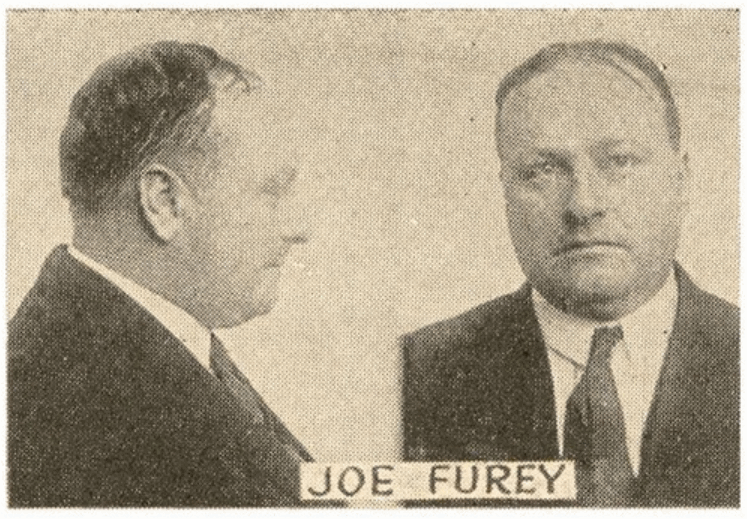I woke up today, only to find my “news” feeds all stuffed up with a most amazing psyops campaign. Wow! I’ll tell youse guys, it’s really impressive. They must have unleashed every free ‘bot they could get their hands on. Jeeze!
According to the “news”, Russia is deeply regretting invading the Ukraine and trying to fight the forces of “democracy”, with little old grandmothers fighting to protect their cabbage patches, and fields littered with the carcasses of destroyed Russian armor.
“The same pilot who shot down six Russian warplanes, he was nicknamed the ‘Ghost of Kiev”. “A column of scorched Russian equipment near Konotop”. “Snake Island recaptured”. Such messages have quickly gone viral on Russian-language telegram channels, which are a major source of information for the world media. The impression is that Russia has already lost the war and its last reserve are Kadyrov’s 10,000 guards, an army of absolute evil, who lined up outside the Chechen leader’s gloomy palace, preparing to be sent to Ukraine. Well, it also looks like Russia has lost the war, the war of fake news. The first time Ukrainian telegram channels were caught in a lie was on the morning of February 24, just a few hours after the war broke out, when they started spreading photographs of the first Russian tanks knocked out by the Ukrainian military. It soon transpired, however, that the snapshots had been taken in Syria and were several years old, yet the unverified information about Russian losses had already been picked up by the media. The fact is that the Russians had unwittingly played into the hands of the Ukrainian PR people. The Russians advance in mobile, self-directed columns. Therefore, if a vehicle breaks down (the cruising range of a tank or infantry fighting vehicle is several times shorter than that of a civilian jeep), they simply abandon it, because they have to move fast. Before long, the photos of the abandoned tank or APC appear on Ukrainian messenger services and in social networks as a “destroyed tank of the invaders.” -Batko Milacic
Who are “they”?
“They” of course, is the United States DoD who is running this proxy war against Russia. Make no mistake about that. So the USA got what it wanted. The USA is fighting Russia, and it is doing so where they planned, and engaging it in such a way to become a long-drawn-out war.
It’s not going to be one. So don’t worry.
Now, you can go on the internet and read all about the brave Ukrainians, but Jeeze!, it’s all disinfo. I’m sure the well-armed, and well-dug-in neo-Nazi forces are fighting heroically. But they will be overwhelmed. The timetable is in motion, and the clock is ticking and things are going according to plan, so don’t worry about it.
Let others chat about that.
We’ve got better things to do.
I just got a comment from a Korean who is living in the High Desert of California. Yeah. I lived there, don’t you know. That’s where I got my MAJestic probe calibration and training. It’s awfully nice. Well, if you like pine tree forests on gravel, twisty and turny roads on the edge of cliffs with no guardrails, and fresh cool mountain air.
There’s a real Western “cowboy” vibe about the High Desert. And that has inspired me to present the work of one of the best “Western” themed artists that I have ever come across.Let’s take a look at some of his amazing work.
I hope you enjoy this post.

Mark Maggiori is a French painter who paints modern cowboys in the nostalgic American West. Maggiori’s approach is realistic and academically tuned.
Maggiori is a graduate from the prestigious Academie Jullian in Paris, France and currently resides in the United States.
More: Mark Maggiori, Instagram, Facebook

At the age of 15, Maggiori visited the United States and drove cross-country with his uncle, it was love at first sight. Ever since that trip, he dreamed of returning to live in the American West.
After graduating Academie Jullian in 2000, Disney Studios recruited Maggiori with a prestigious Art Director position in Los Angeles, CA. Maggiori declined the offer to stay in Paris where he could be free to excel in various types of art including photography, animation, and music video directing, all while heading the rock band Pleymo as their lead singer.
In 2001 Pleymo signed with Sony records and toured the globe for 10 solid years, and still the dream of the American West never left him.

With his desire to discover America, he returned to the USA with a film camera and lost himself in the rural South for months.
Through directing music videos, he had the opportunity to wander the country, including Los Angeles, where his life changed.
Petecia Lefawnhawk, was a talented and very creative artist living in Los Angeles.
Maggiori was lucky enough to work with her in one of his music videos; this encounter changed the course of his life forever. Lefawnhawk introduced Maggiori to the ghost towns of the west, including Chloride, Arizona where she grew up.
It was in this setting that Maggiori directed a feature film “Johnny Christ” in 2010.
Soon after they visited the National Cowboy and Western Heritage Museum in Oklahoma City…and it was that day that Maggiori decided he would stop everything and dedicate his life to documenting the American West.
Today, Maggiori lives in Los Angeles, CA with his wife Petecia and paints the American West full time.
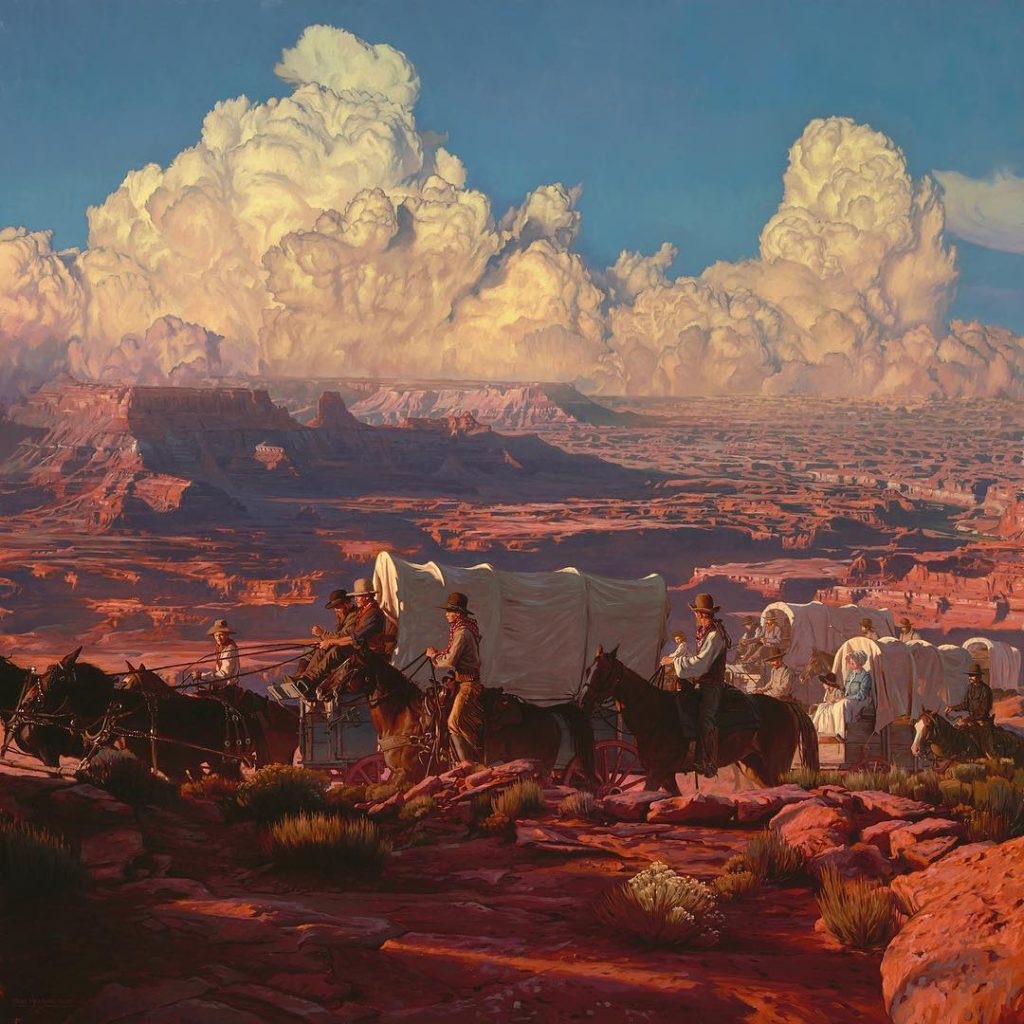
“I love to paint and dream about the good old times, Cowboys always represented, for me, a time when America was still a promise land…a huge dream for whoever wanted it, before corporations and plastic…I am trying to paint pieces that will tell a story itself and bring to the viewer certain nostalgia, a moment to remember what it felt to be riding a horse on a wide-open range. I am so fascinated by the era 1860 to 1910 in Europe and in America. Those were some golden ages.” – Mark Maggiori
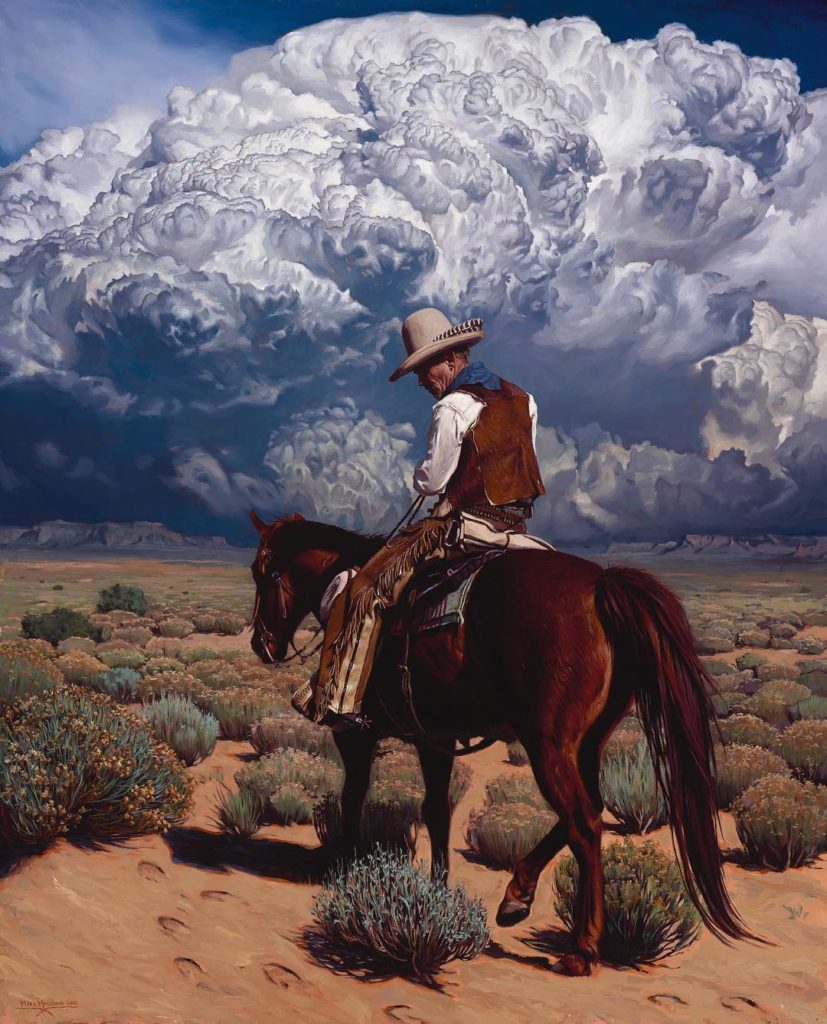
.
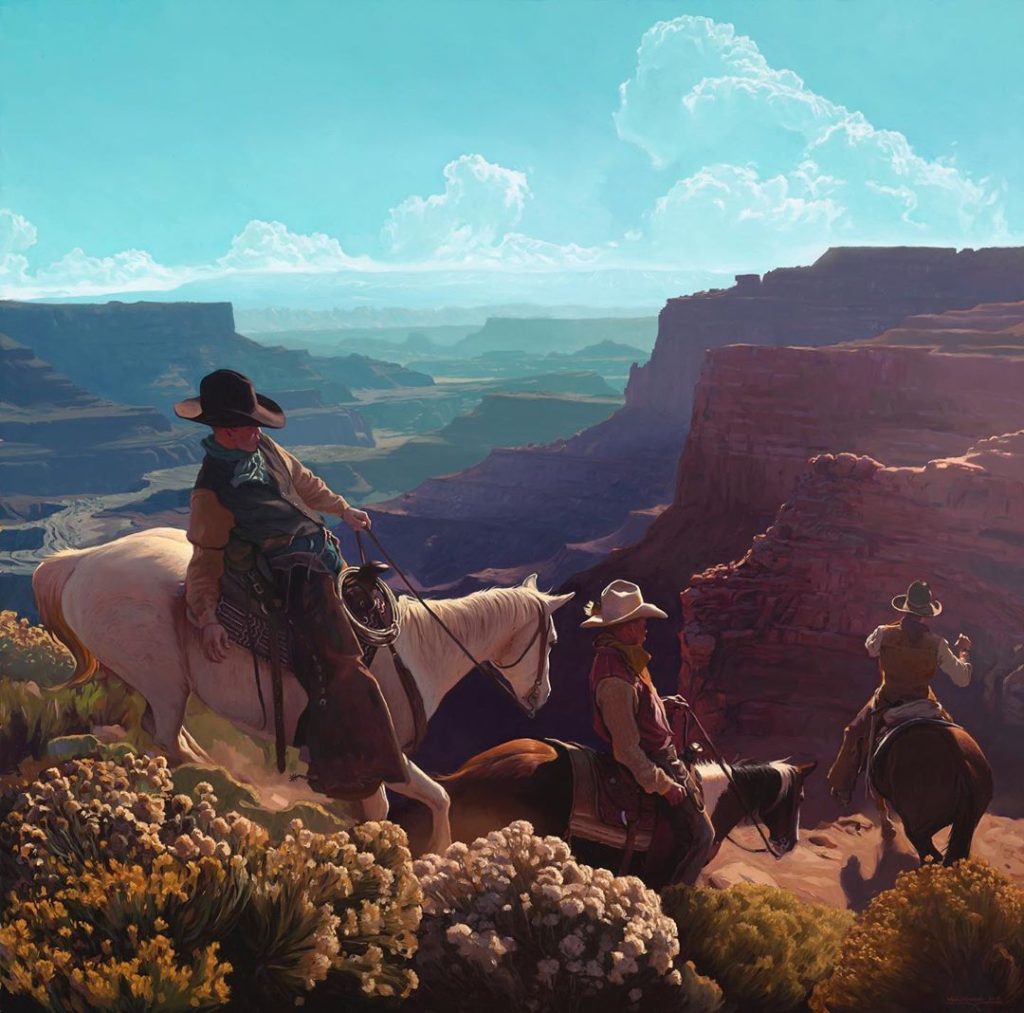
.
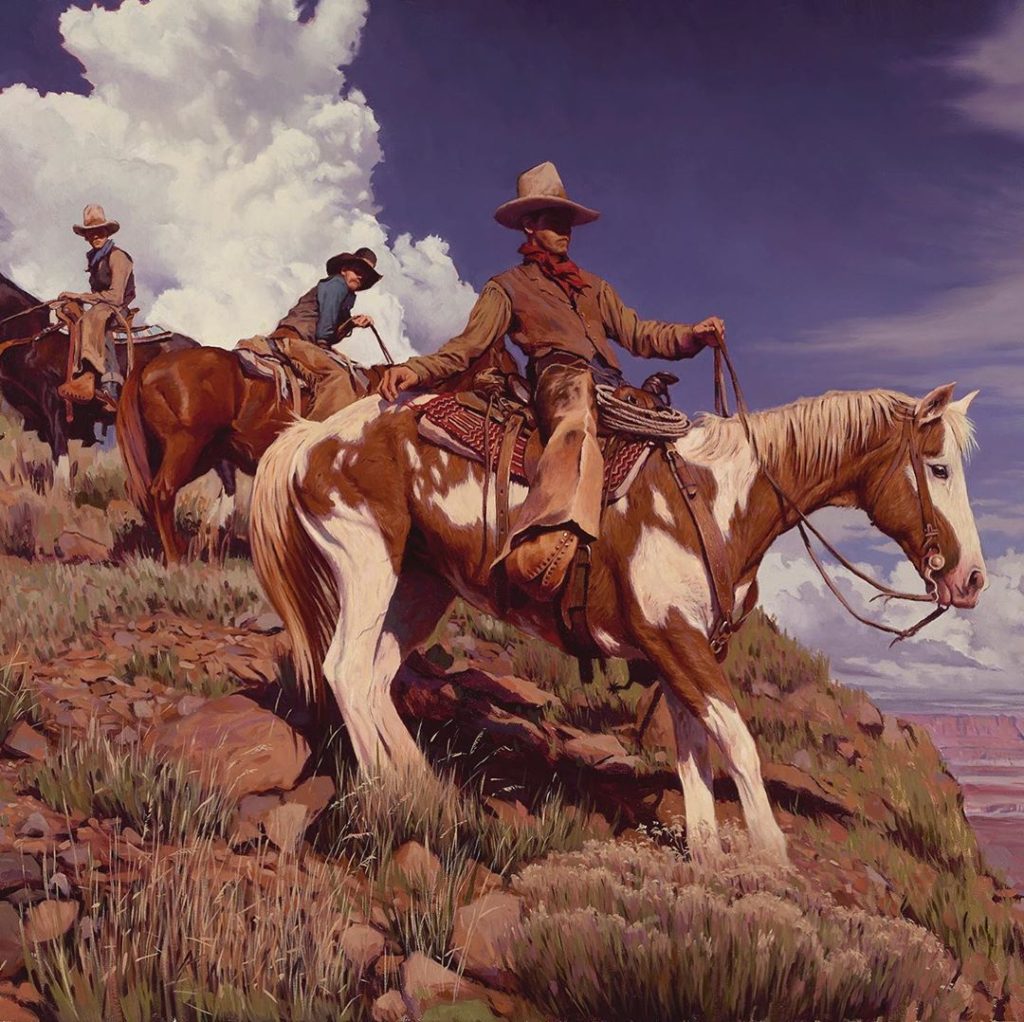
.
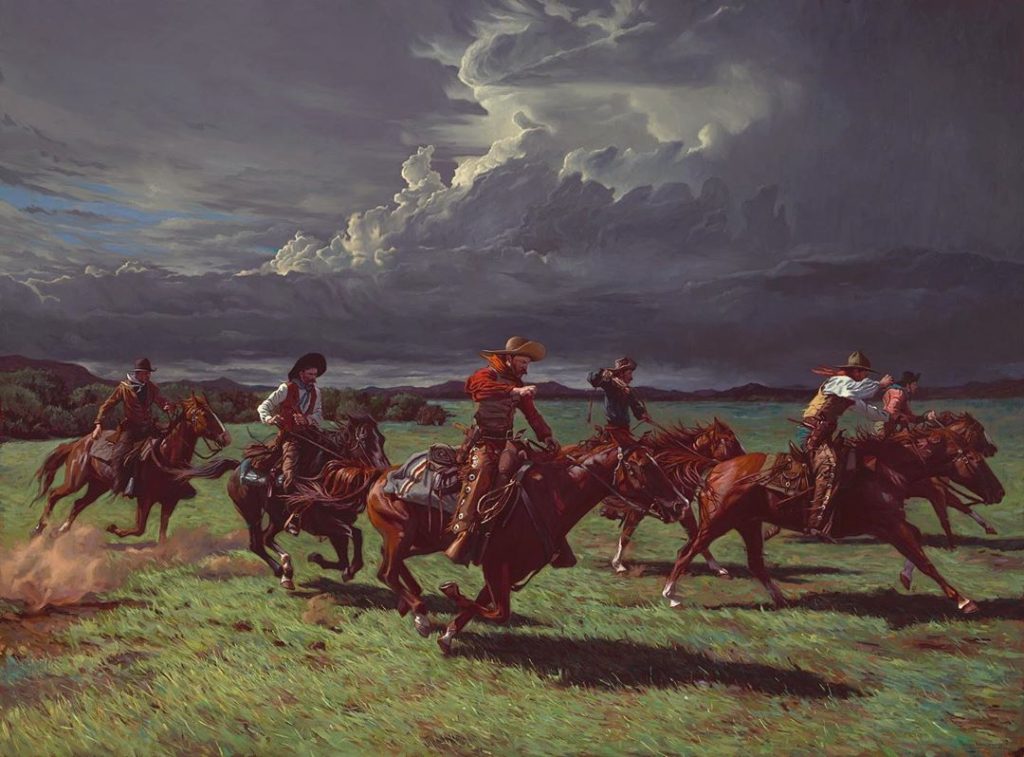
.
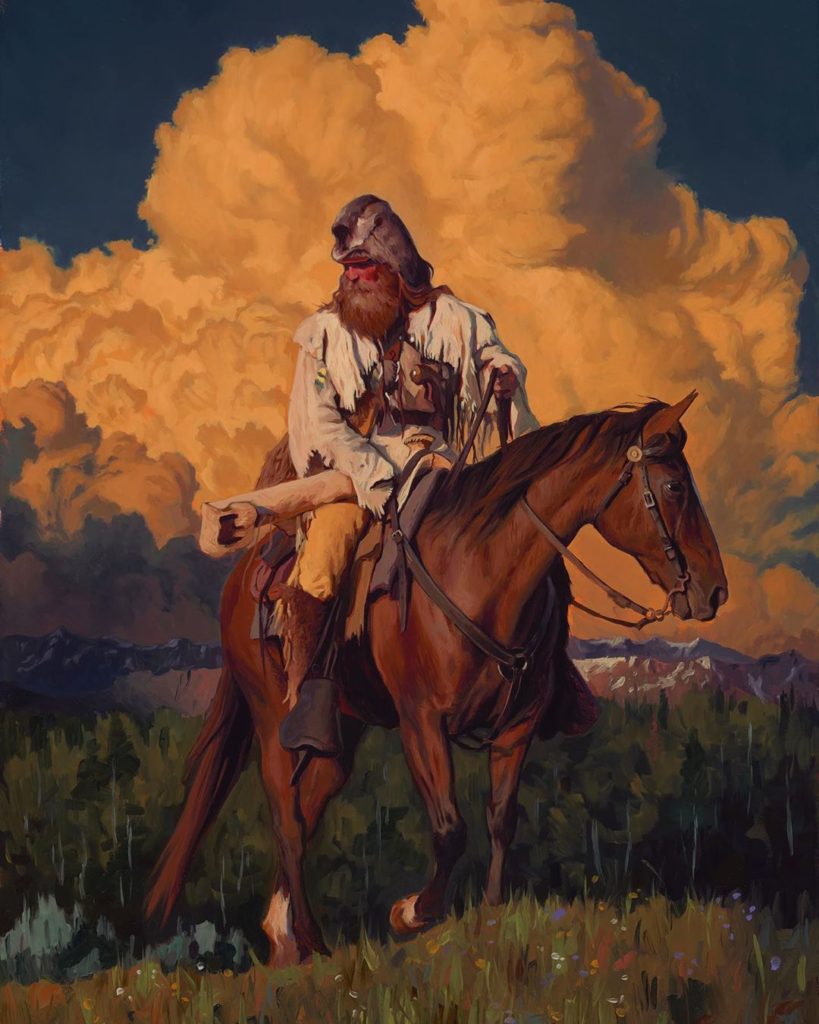
.

.
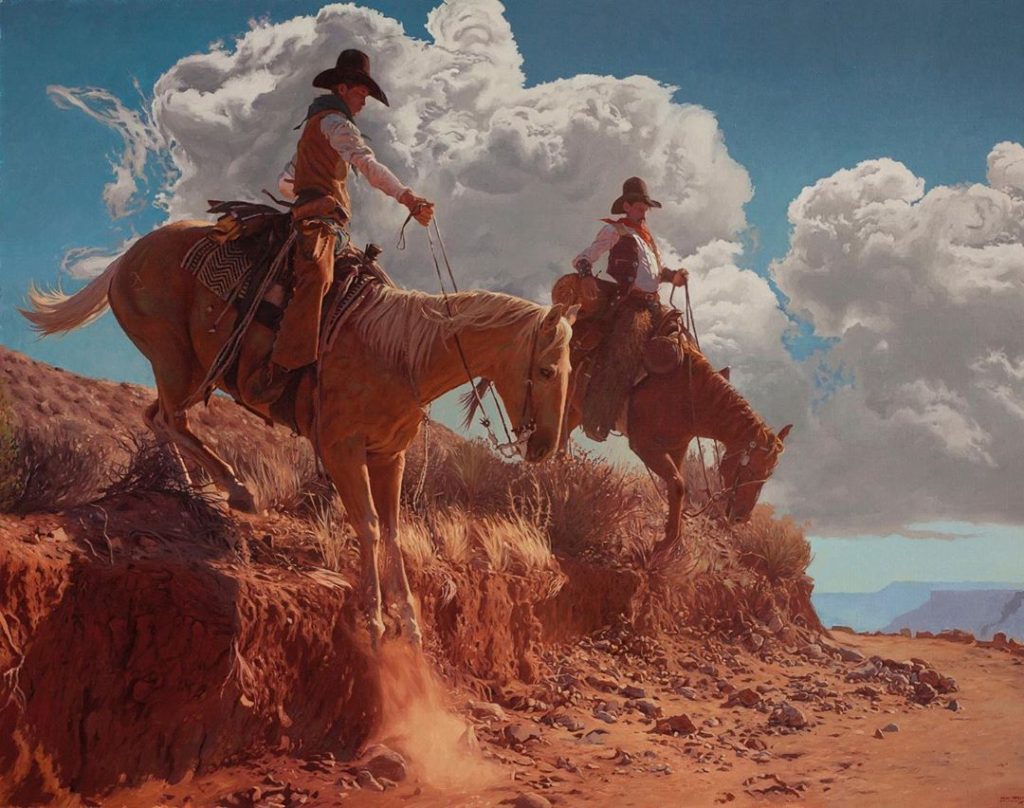
.

.
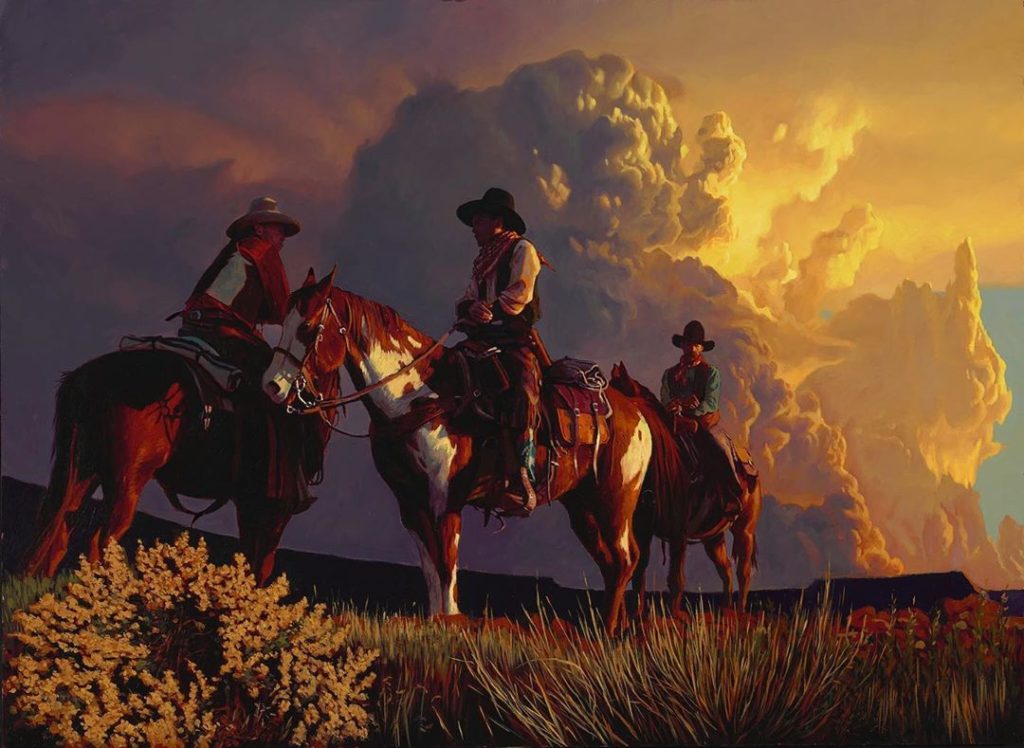
.
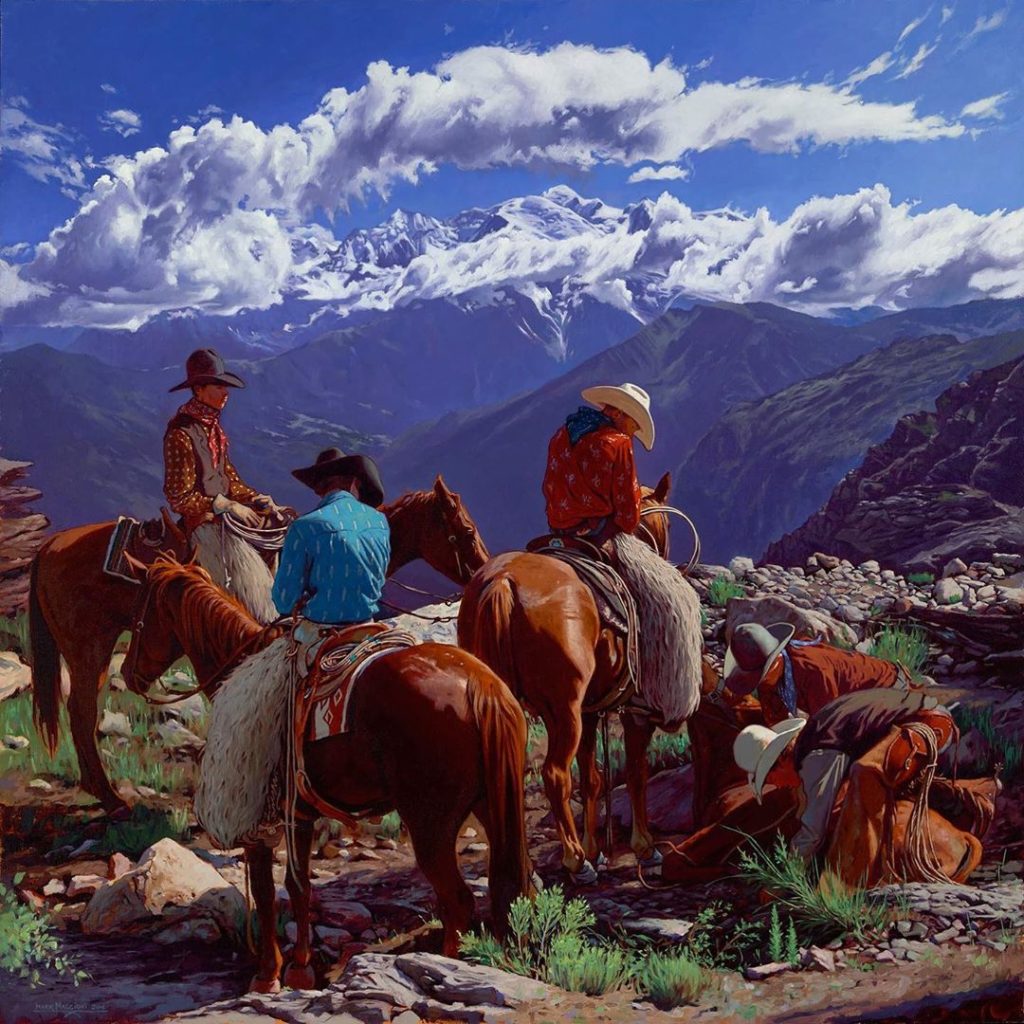
.
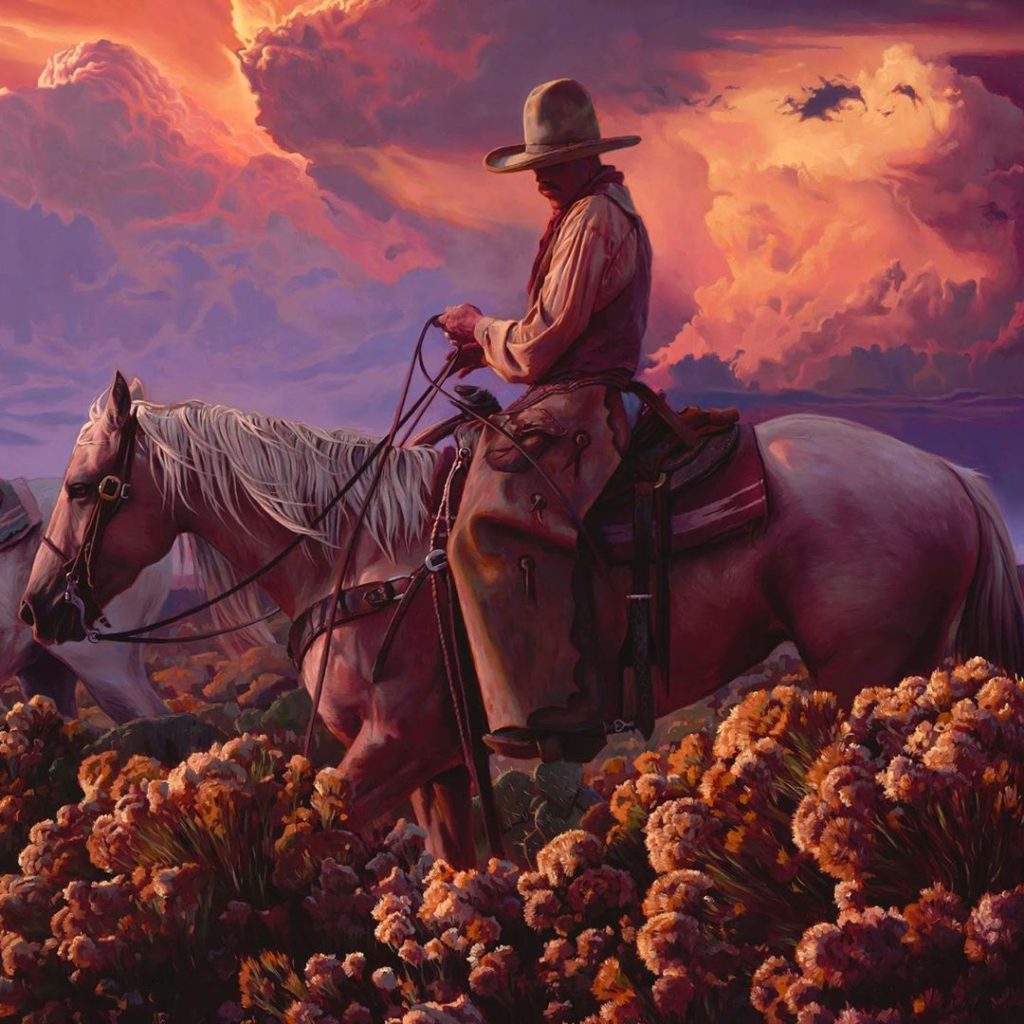
.
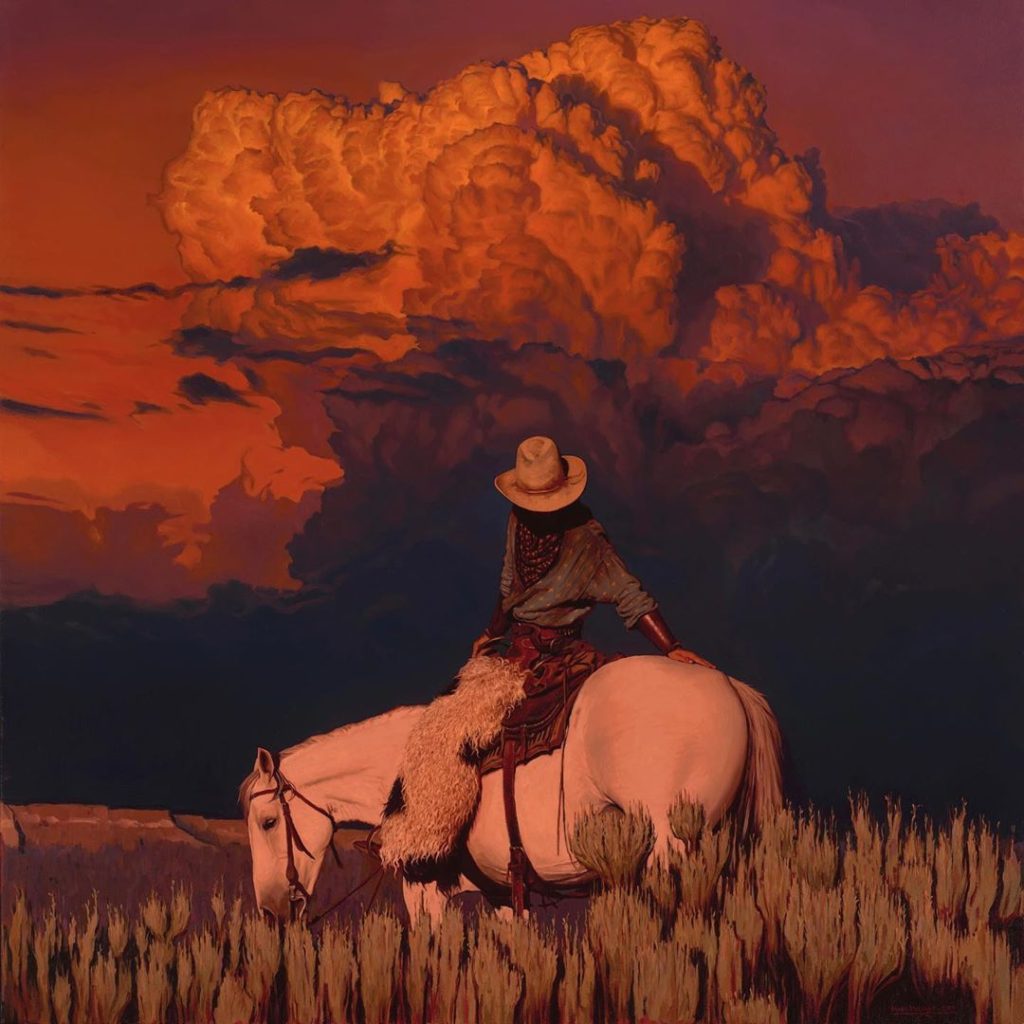
.
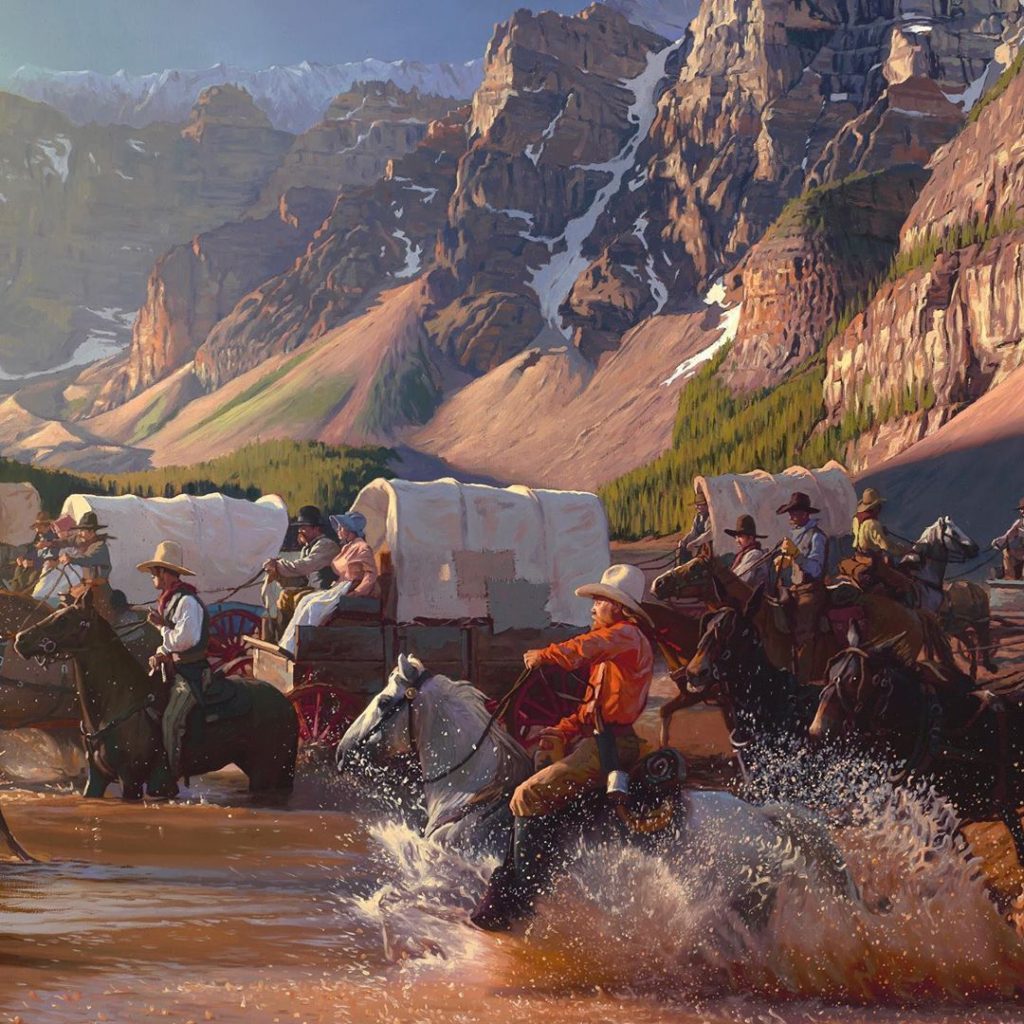
.

.
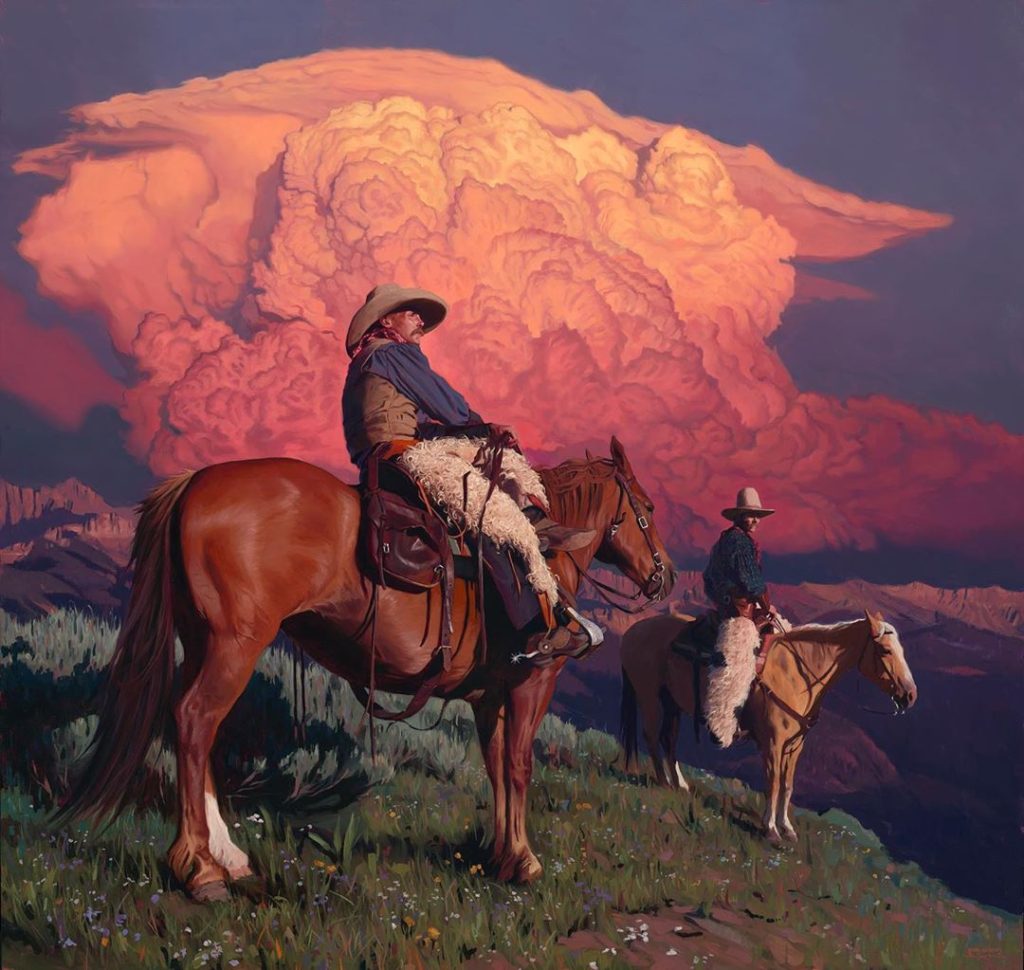
.

.
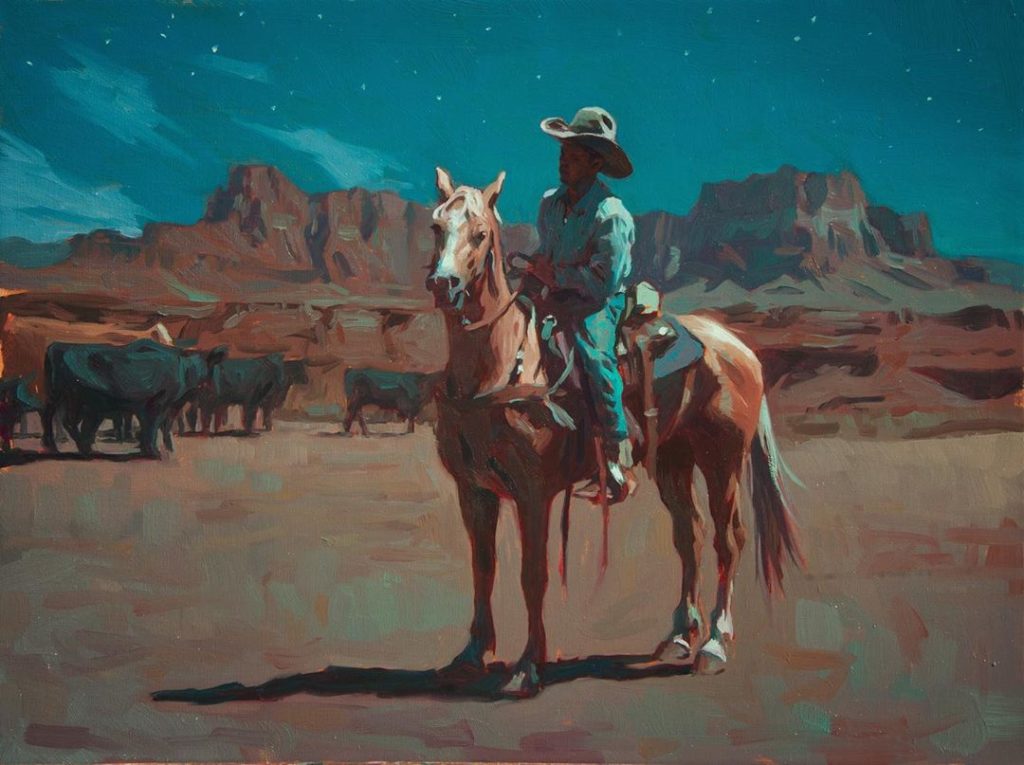
.
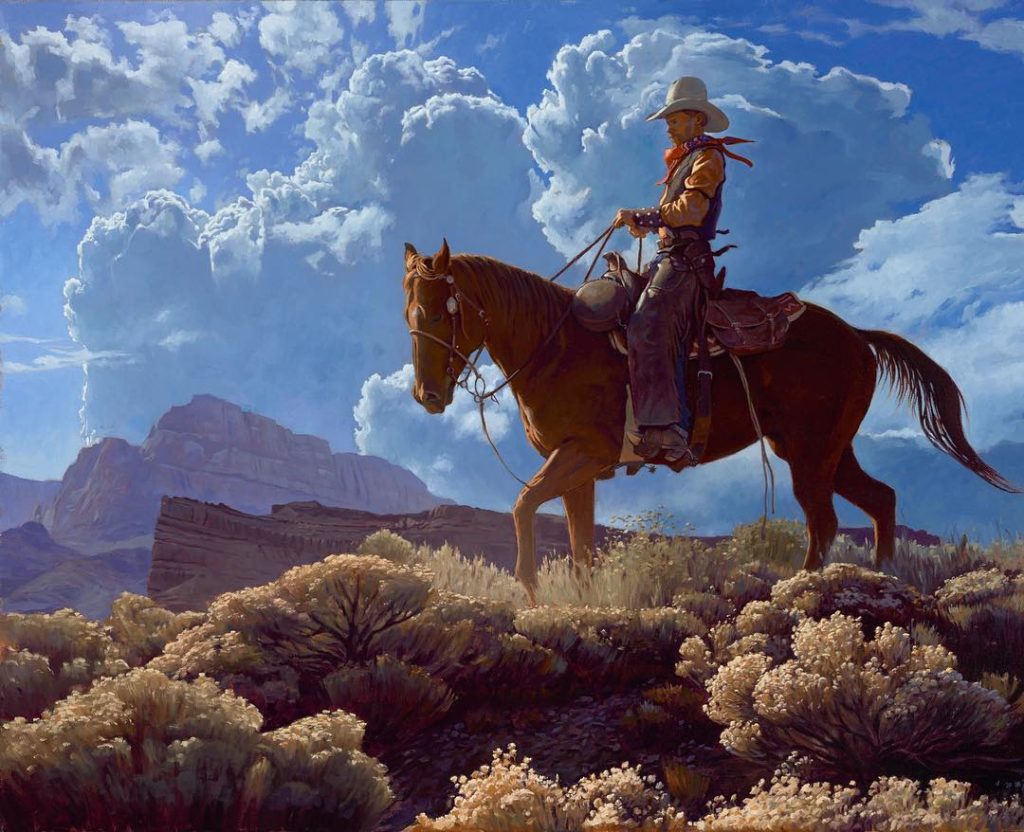
.
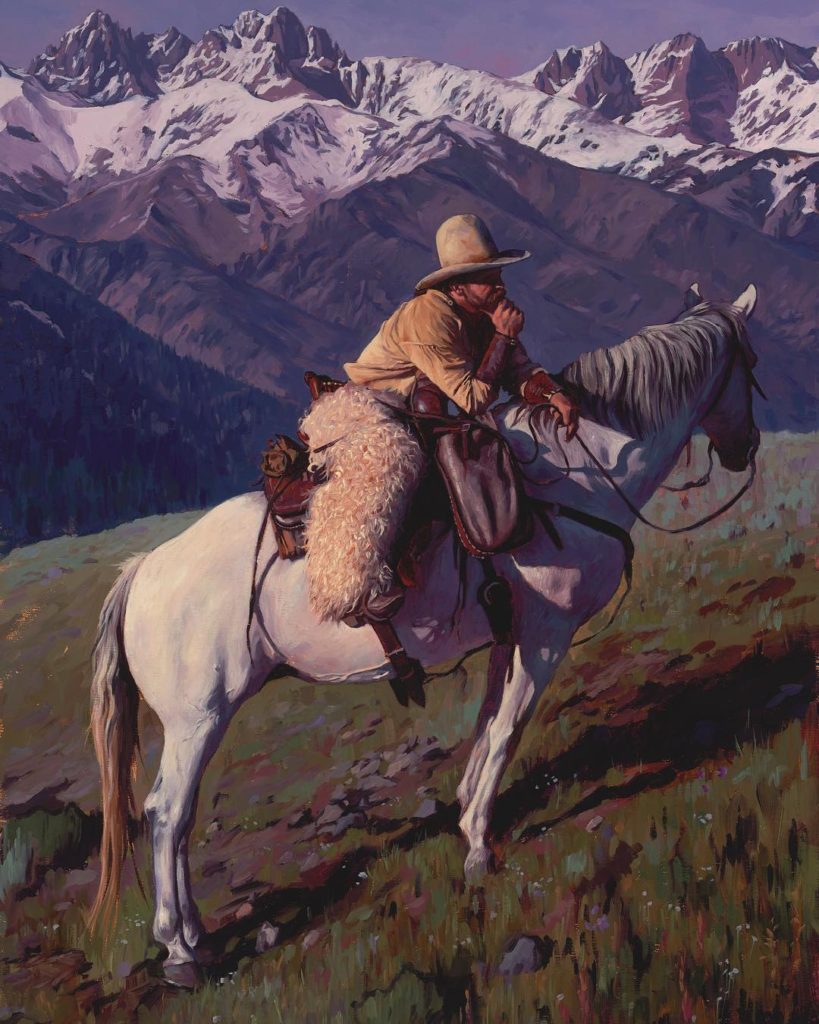
This next painting has got to be the best of the best…
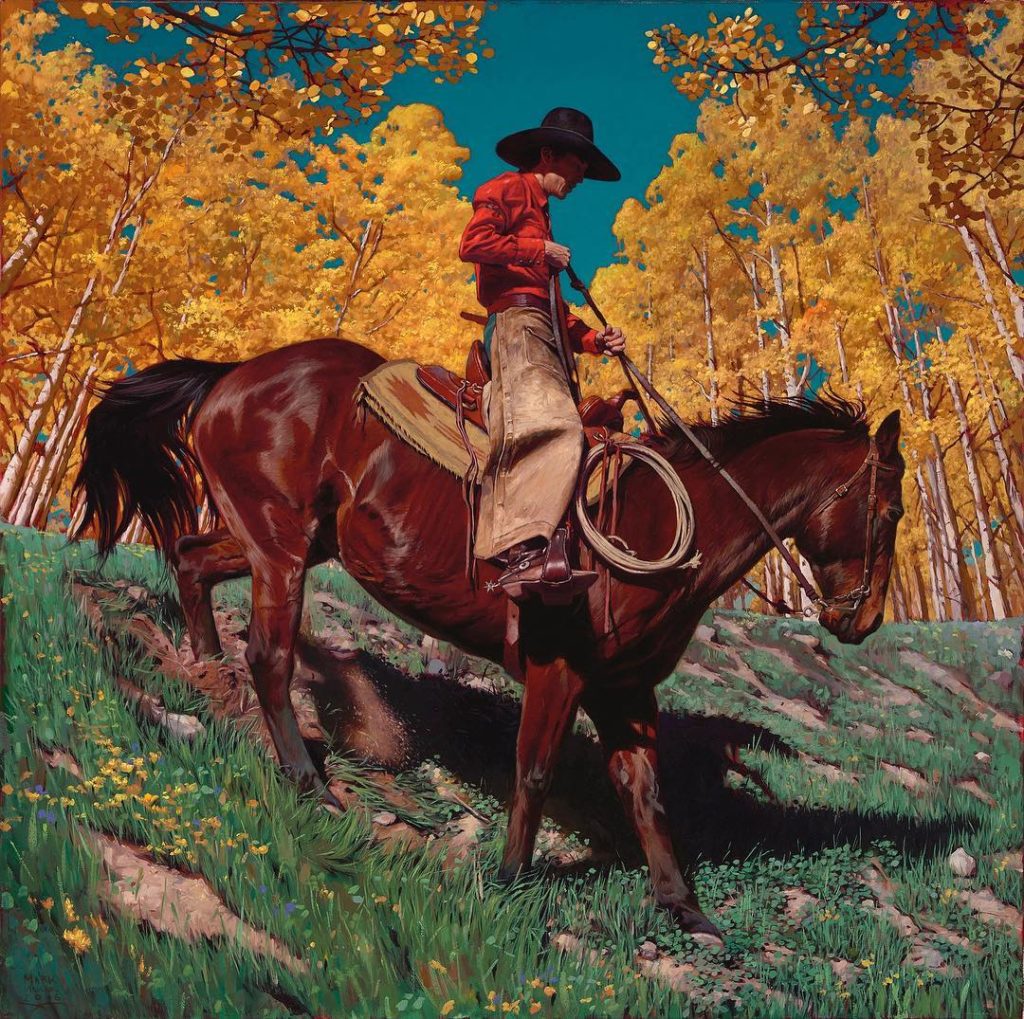
.
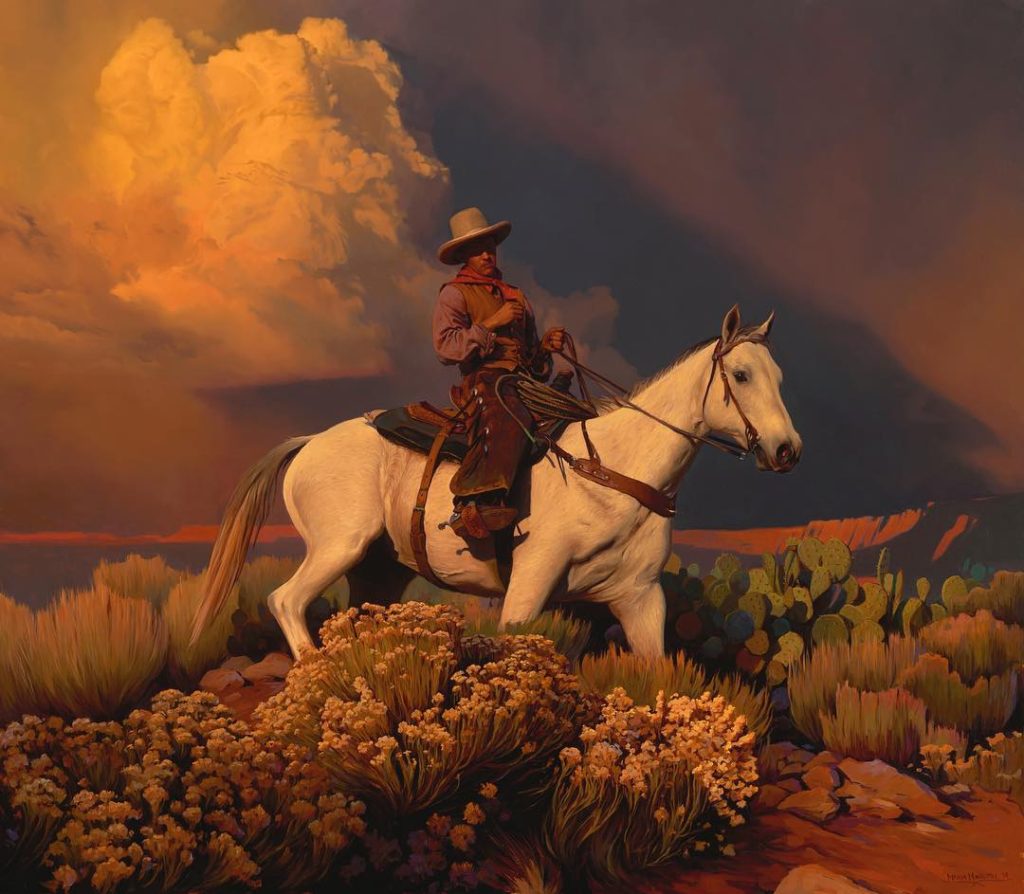
.
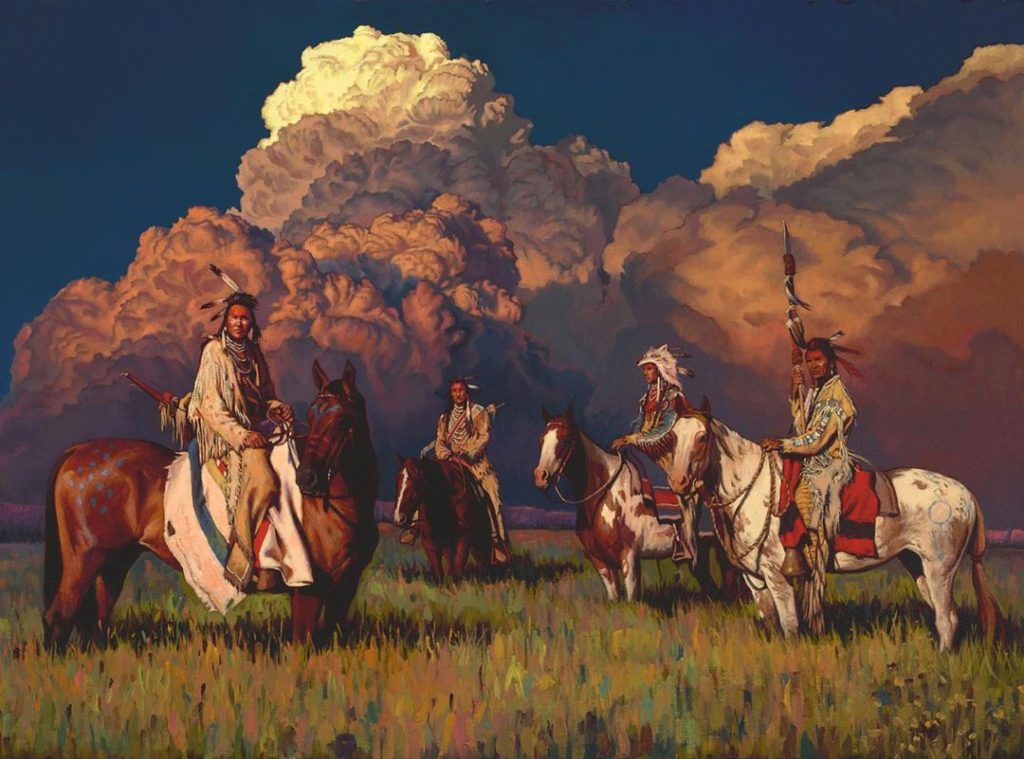
.
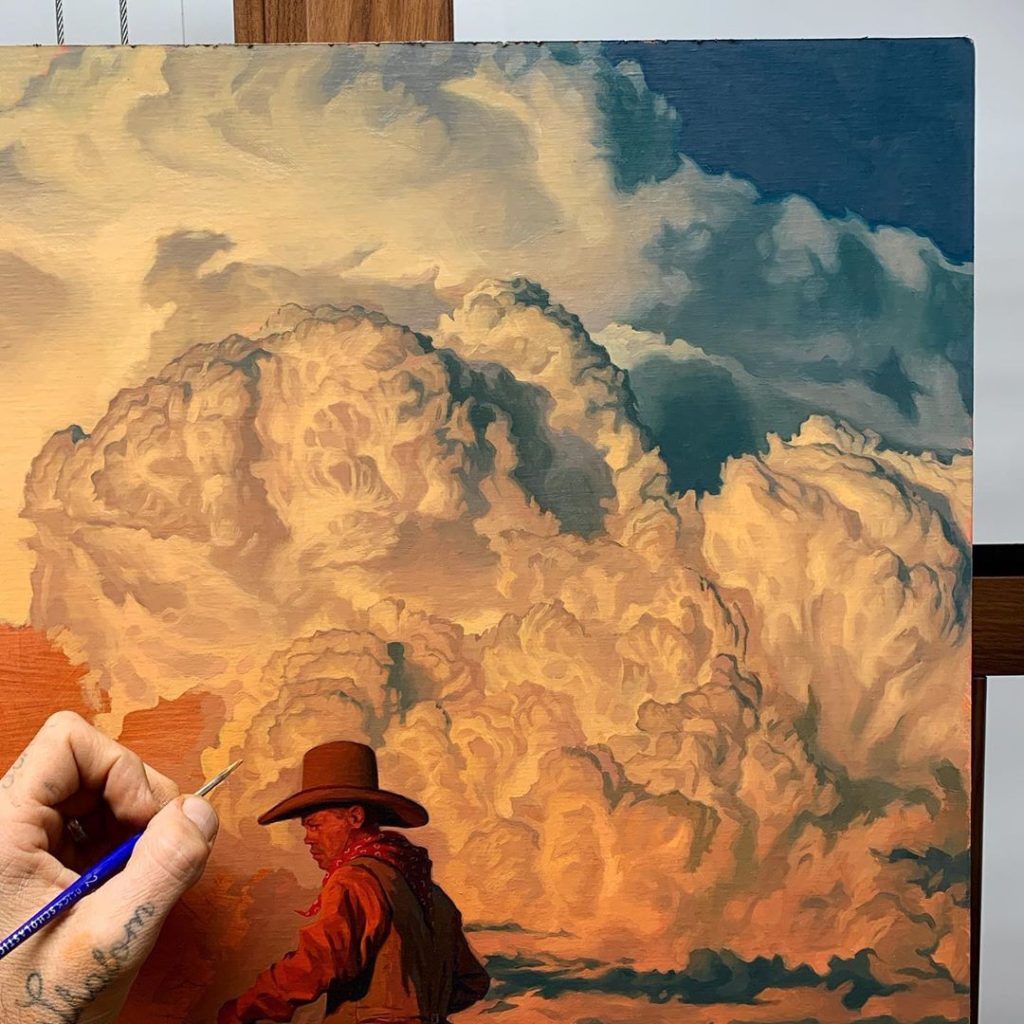
.

.
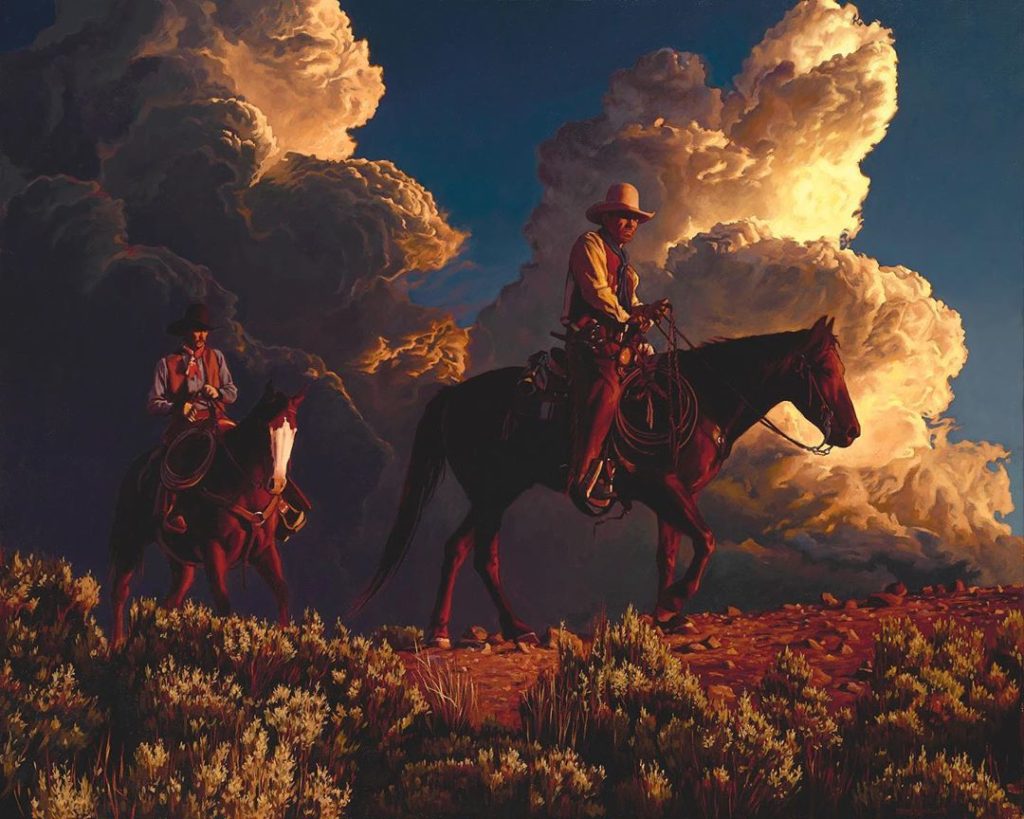
.
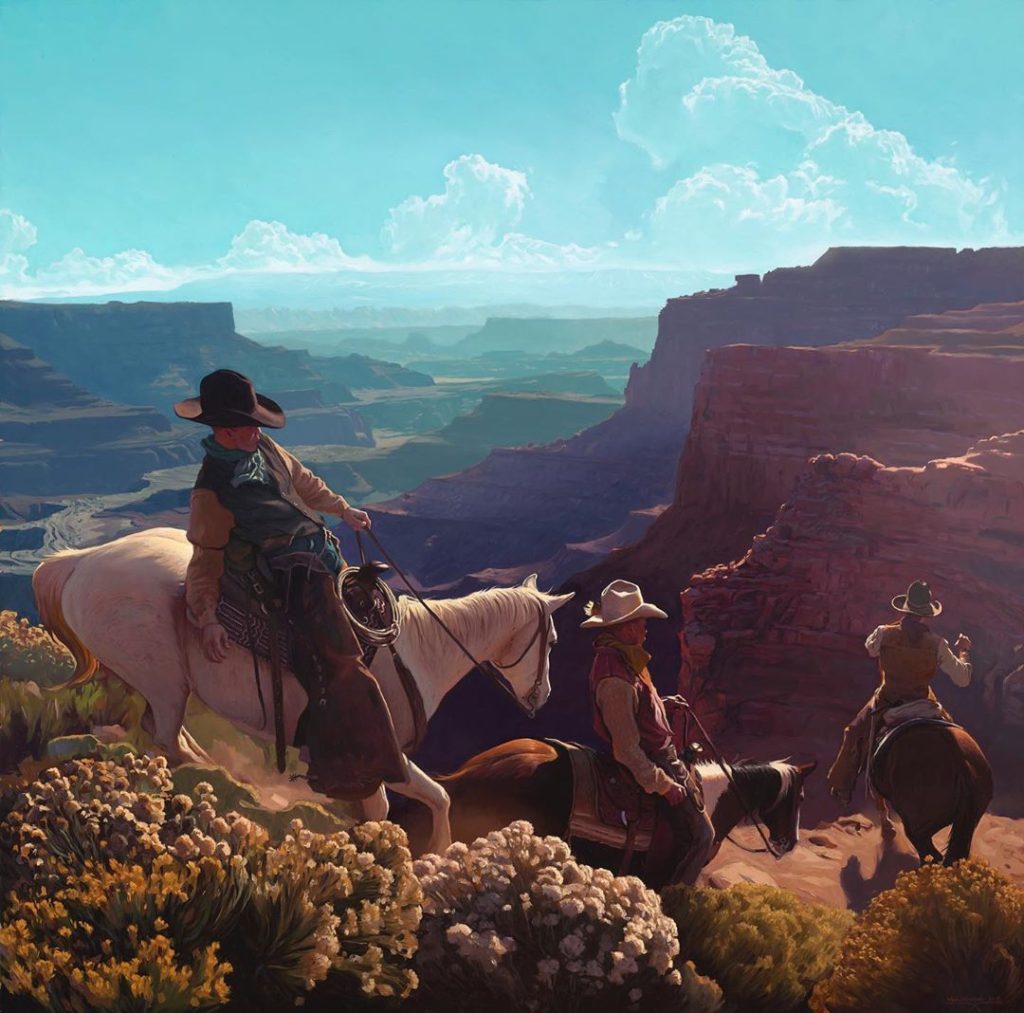
.
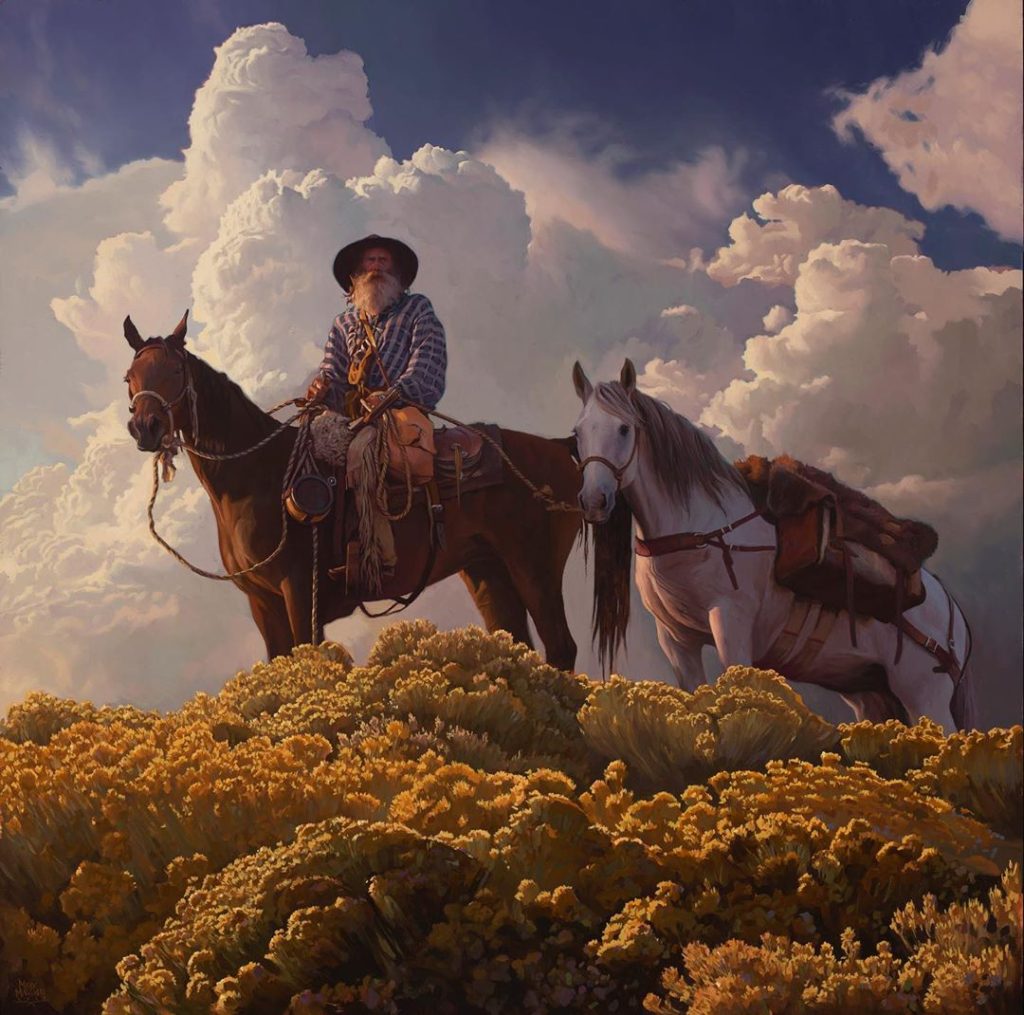
.

.
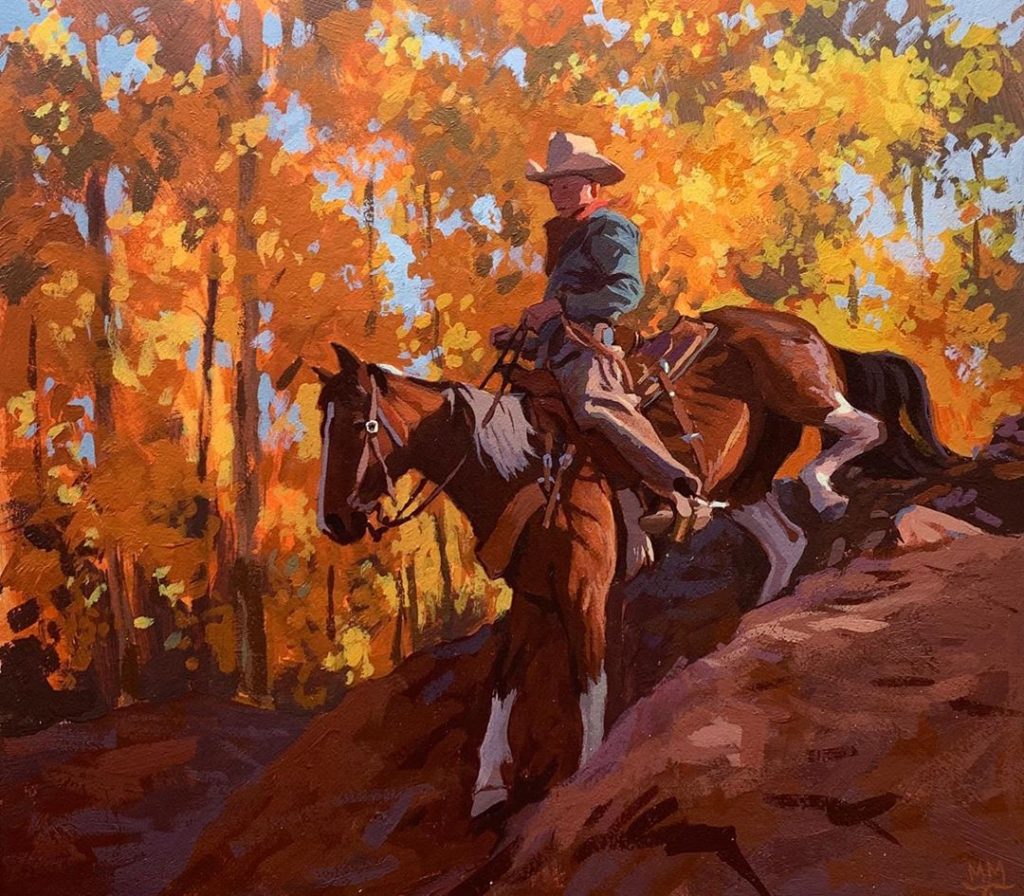
.
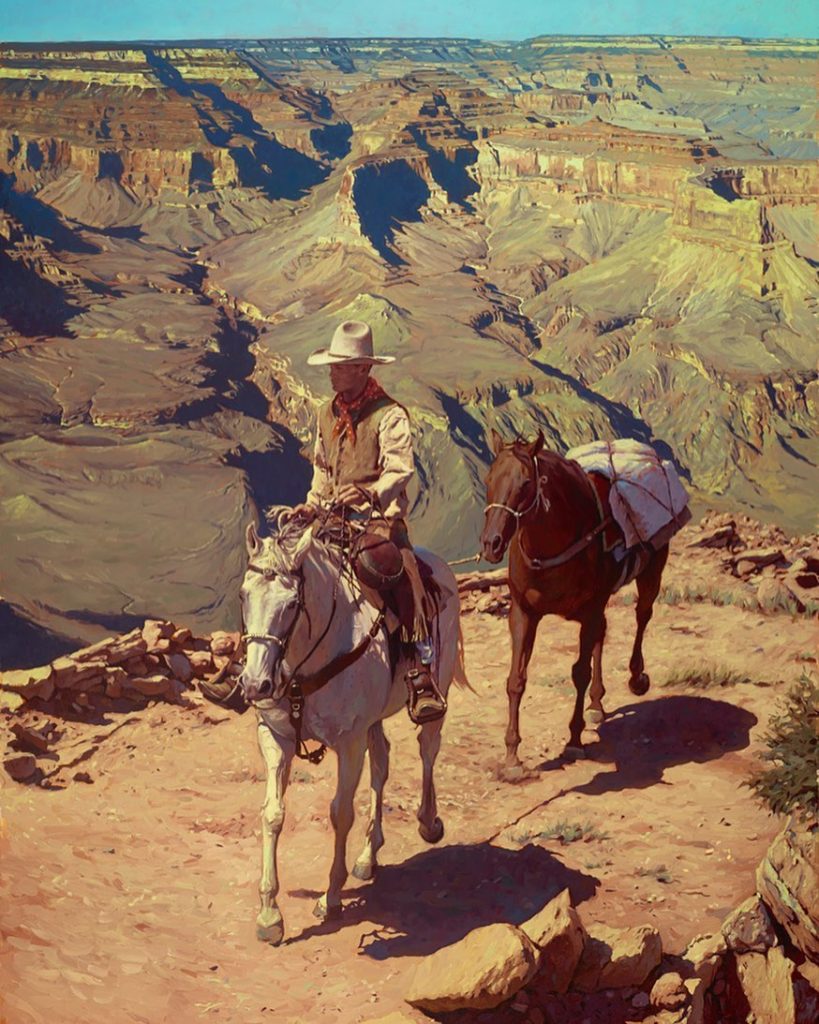
.

.
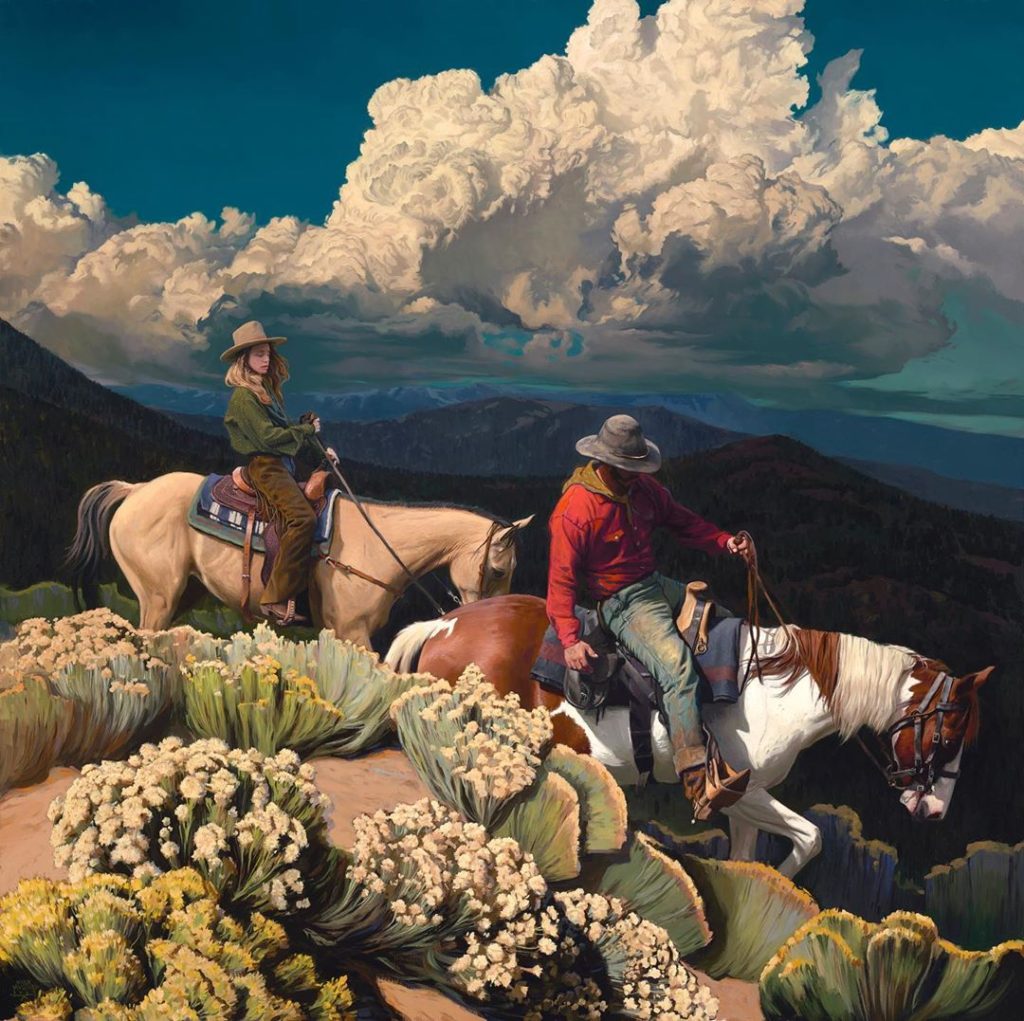
.

.

.
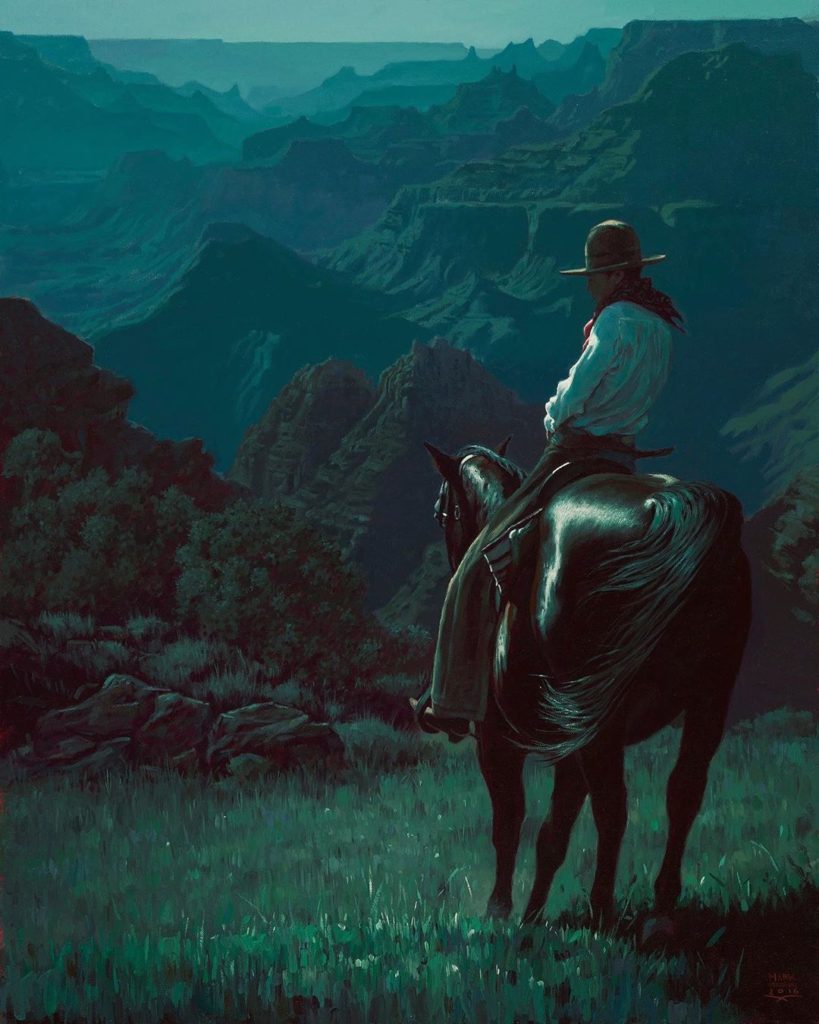
.
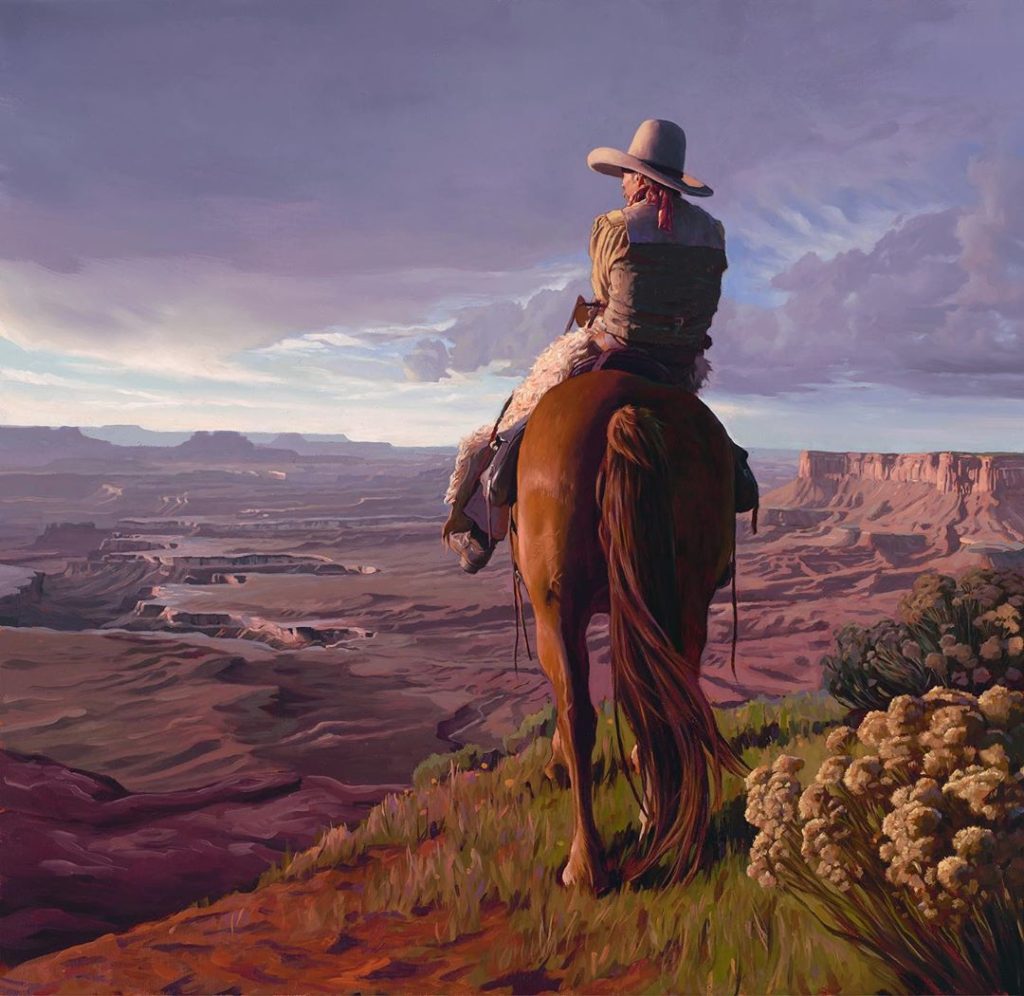
.

.
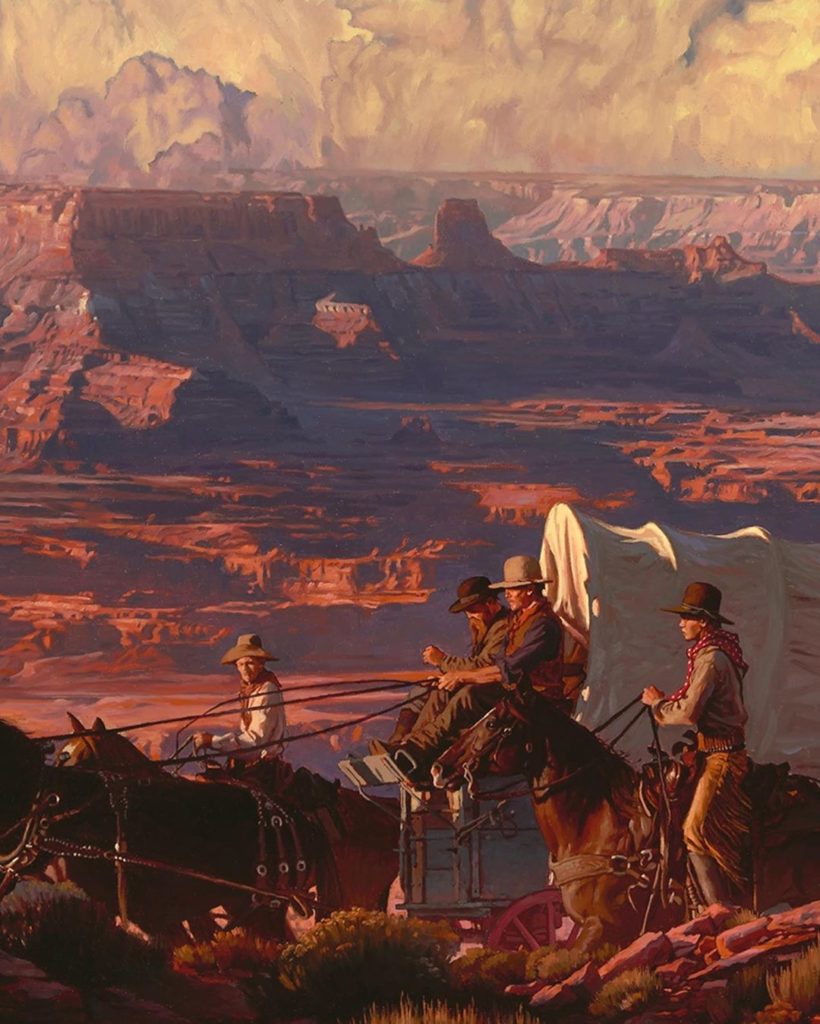
.

.
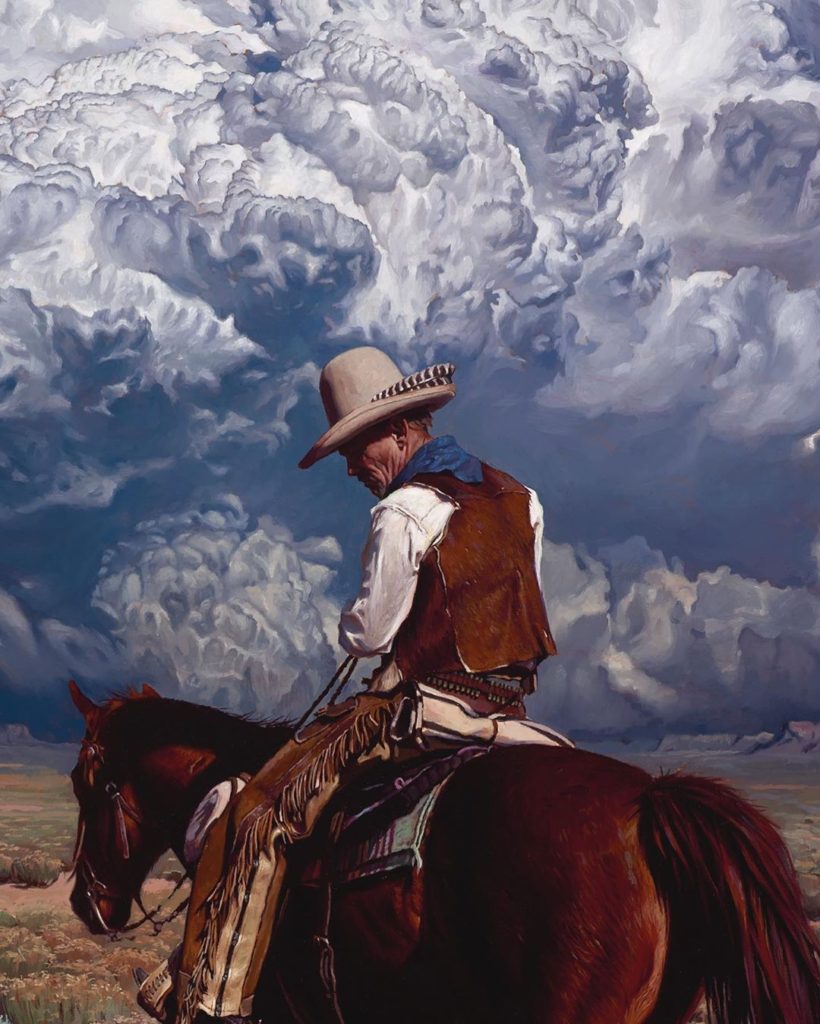
.
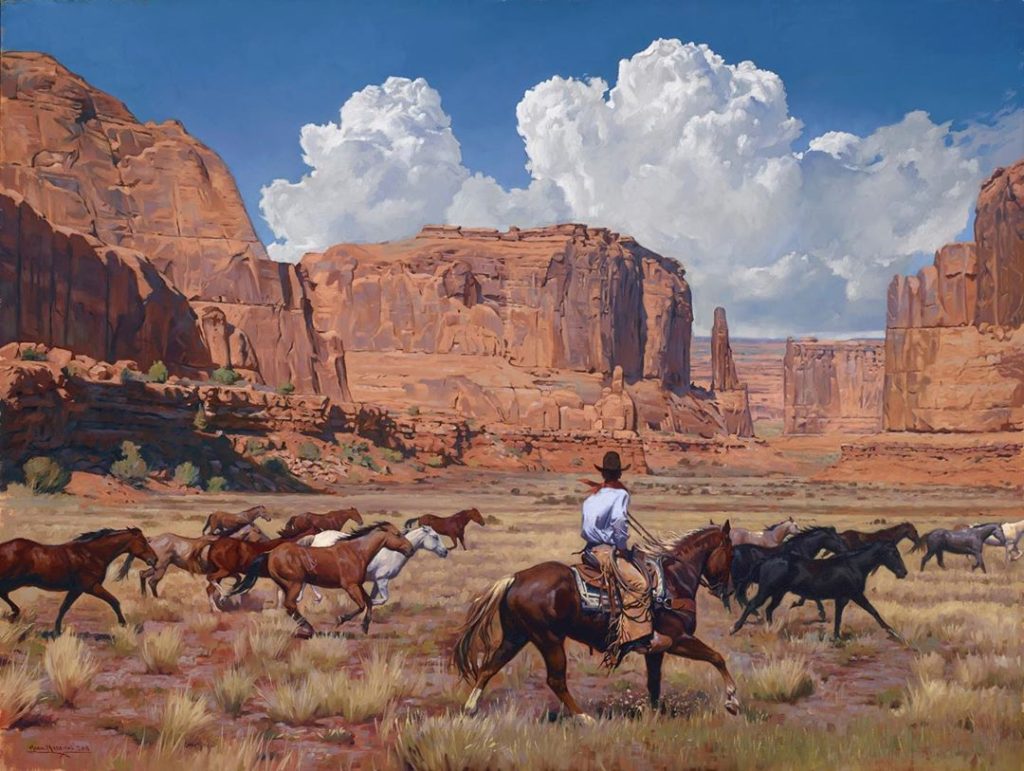
.

.

.
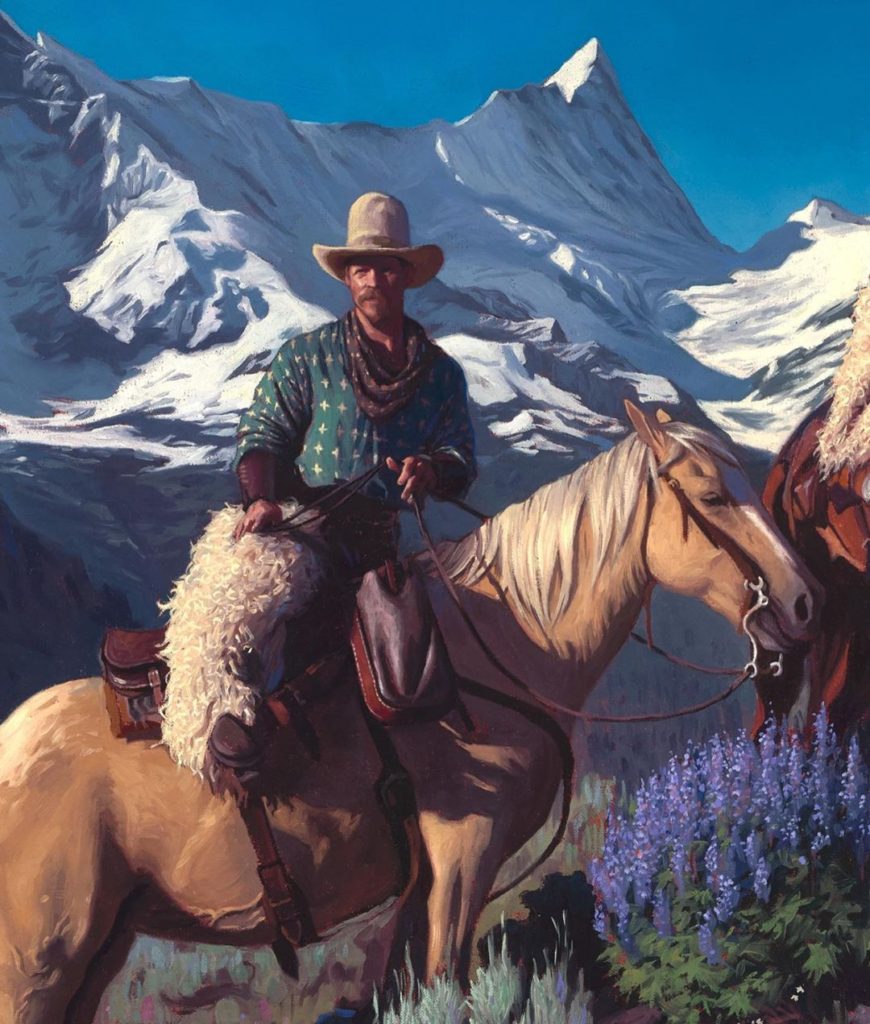
.
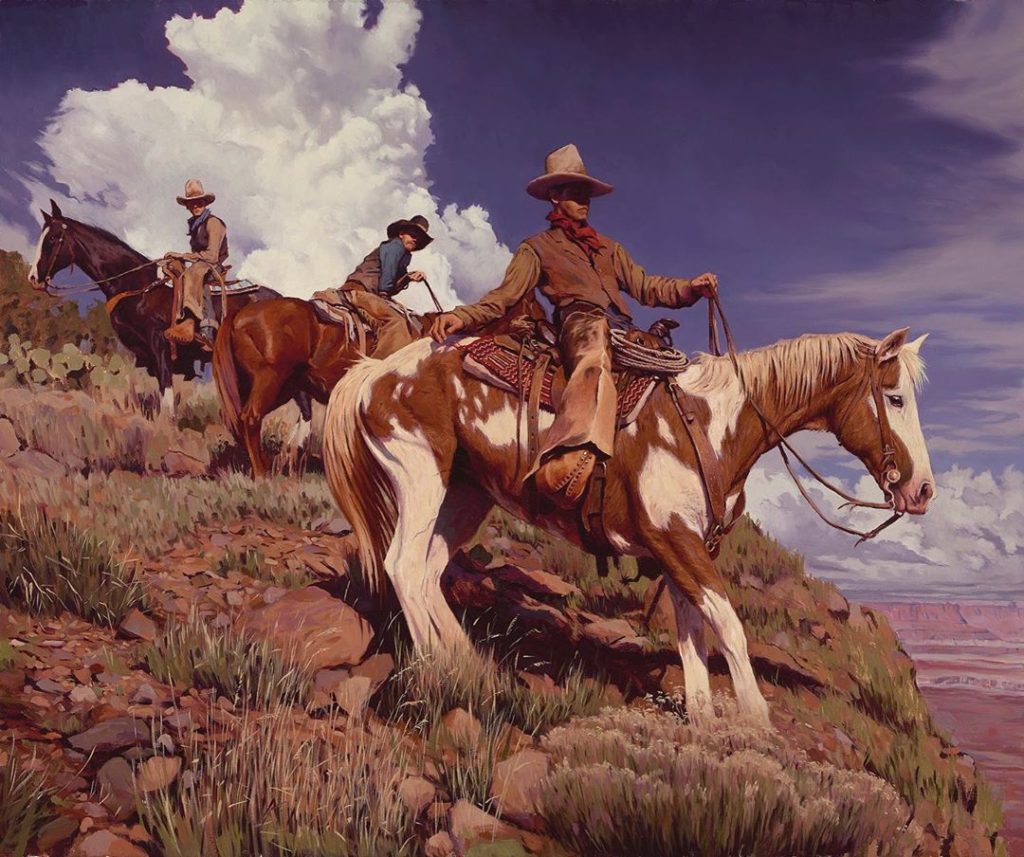
.

.
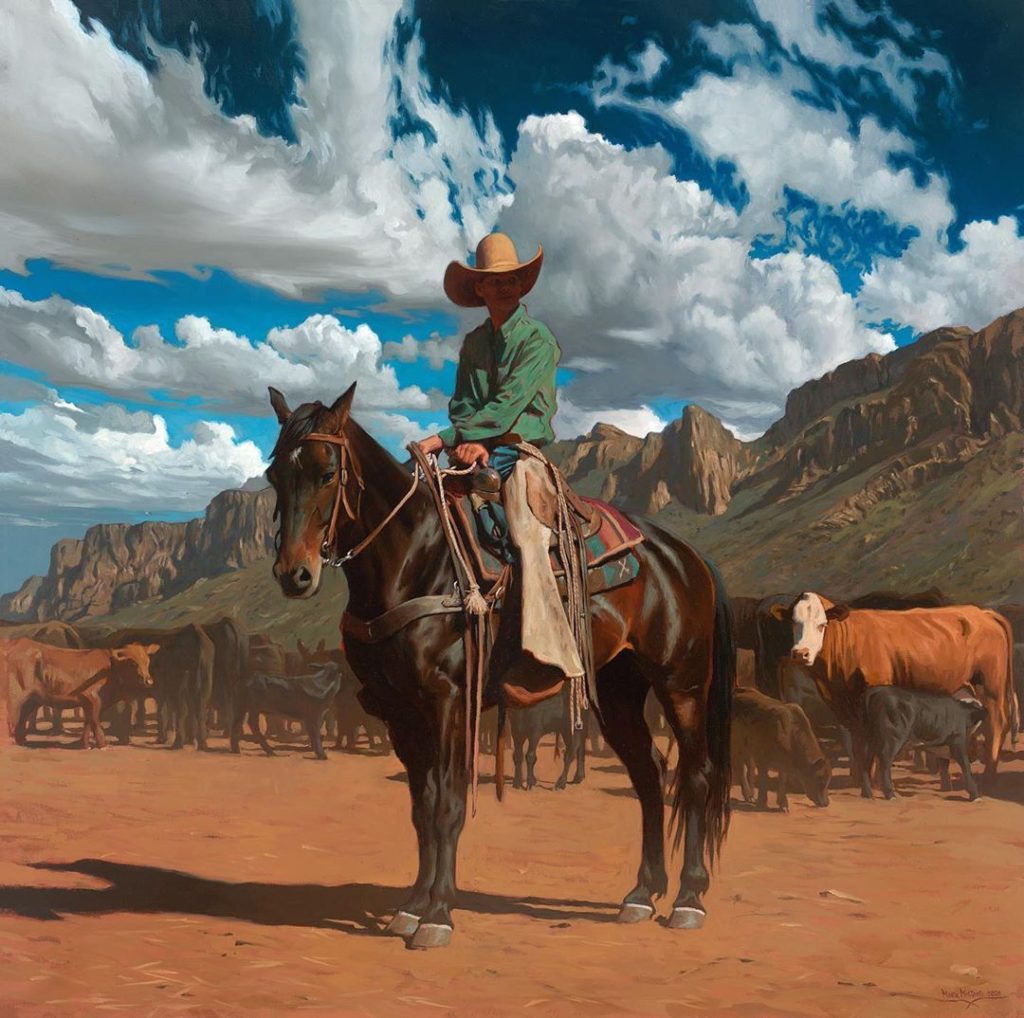
.
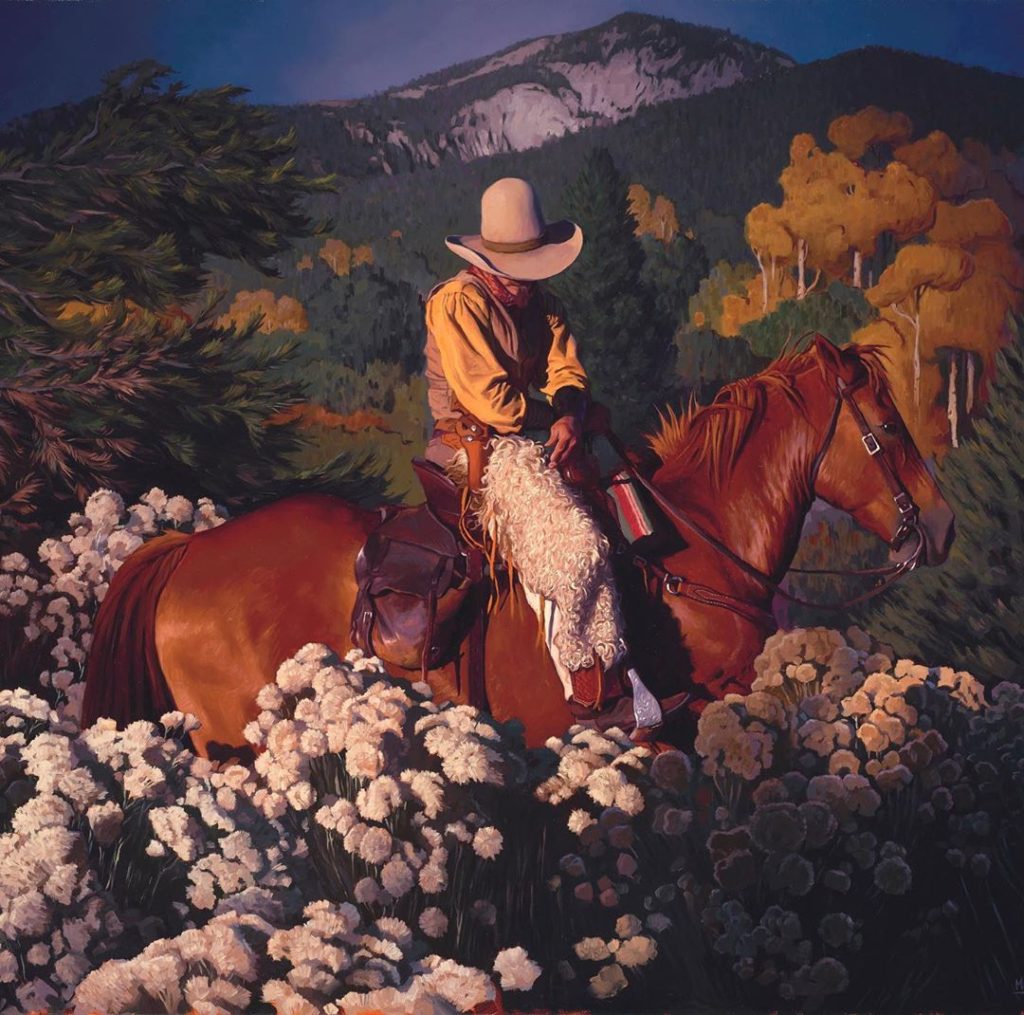
.
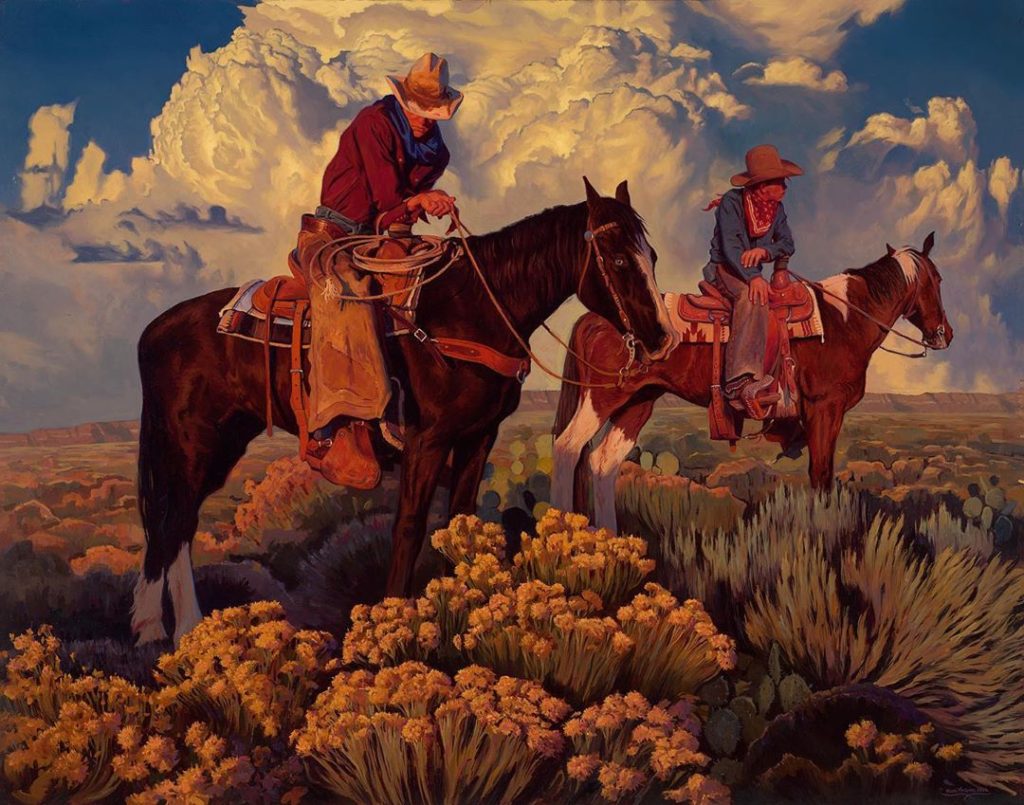
.

.

.

.
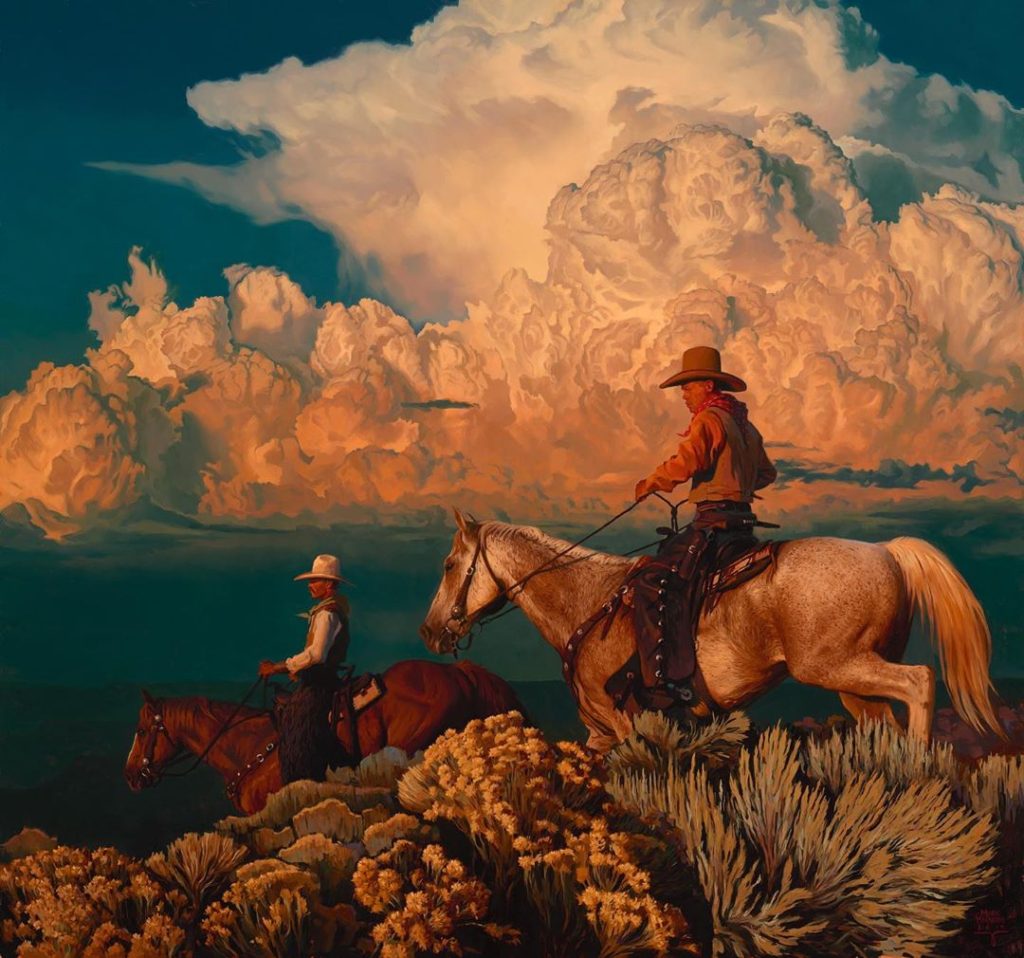
Lost mines
He’s a pretty awesome artist, eh?
As a boy, I grew up reading “Treasure Magazine” that talked about gold and silver and precious stones, all in great abundance in the California deserts. I would daydream about being a cowboy of the Old West, or even better, finding the discoveries that lie hidden in plain sight.

Things, like old belt buckes, and rusty old swords and pistols were of chief interest in those days. I also used to daydream about finding some of those “lost mines” and venturing inside to gather a handful of precious gold nuggets, and then becoming wealthy as only a ten-year-old boy could conceive.
Of course, when I actually lived in the desert, it was a different story. But still, the romance of the west is undeniable. Here’s some pictures of abandoned mines of the California deserts.
Keep out!

Of course, most of the mines areound Ridgecrest were just a hole in the ground that went deep, deep, deep down, and if you accidently fell into one of these holes you ain’t never getting out.
But if you start venturing up into the high mountains, you start seeing some green grasses and plants. And you can sometimes stumble upon scenes like this…

Or perhaps something like this…

Of course, Treasure Magazine no longer exists as a paper magazine. Instead, it went online with a host of other organizations.
The Lost Treasure Magazine Obituary
It’s a well-known fact that print is in decline. However, despite this, a number of niche magazines have been able to hold on. Sadly, Lost Treasure magazine met its untimely end in December 2018, ending its over 50-year run covering treasure hunters past and present.
Lost Treasure first launched way back in 1966 and from there it came out monthly from its Grove, Oklahoman headquarters, far from the epicenter of publishing. One of its common features were reviews of metal detectors that modern-day prospectors might use in their quest for gold.
Where Lost Treasure really went above and beyond, however, was in talking about the treasure hunters of old, not as events frozen in time, but in terms of their relevance for gold prospectors in the present day.
The lost treasures of America were a particular focus, as the name might imply, with a particular interest in gold lost during the War Between the States. But there were also gripping tales of old-time stagecoach robberies and the golden age of bank robbery. Lost mines were another focus of the magazine, as well as sunken pirate treasure still sitting around waiting to be taken.
Photos were used, but the magazine also had a distinctive style of drawings that kept readers coming back for more. These were old-timey looking illustrations of everything from six-shooters to scorpions, evoking the symbolism of the Old West. Most were in a charcoal-and-pencil format, which further evoked a bygone age, though watercolors did sometimes appear in the pages of Lost Treasure.
Sadly, it isn’t just the print version of Lost Treasure that disappeared when it ceased publication. The website and Facebook page likewise went the way of the Old West.
The magazine suffered from the generalized decline in publishing, however, its content did not lend itself to continued survival as a niche magazine. Information about metal detectors is not only readily available to the general public on the Internet, it is also much more reliable than the “reviews” in Lost Treasure, which were oftentimes glorified advertisements. What’s more, the historical events cataloged in the magazine are likewise easily available to anyone with an Internet connection. As with the reviews of metal detectors, the information is also far more accurate.
The treasure stories were what sold the magazine — the notion that you could go out today with nothing but a metal detector and be the man who discovered the next mother lode of gold ore to become a millionaire.
It was an aspirational magazine before there was such a word for such a thing. One didn’t need to strike gold or even hunt for it to appreciate Lost Treasure magazine. One could get a little piece of that life every time one opened up a copy of Lost Treasure. That was where the magazine’s enduring appeal came from rather than practical advice.
Practical advice is now readily available for those seeking to hunt treasure. What’s more, large capital investments are no longer necessary to get your start at hunting for treasure. Such materials can now be rented, allowing you to dip your toes in the pond to find out if a prospector’s life is for you or not.
Speaking of treasure…
Read the Reader’s Digest article that inspired Rick Lagina to hunt for treasure on The Curse of Oak Island
The Curse of Oak Island star Rick Lagina was just 11 years old when he picked up an edition of Reader’s Digest and first his eyes on an article that would change his life forever.
The January 1965 edition of the publication — which was at the time the best-selling magazine in the United States — included an article reprinted from The Rotarian magazine and written by David MacDonald.
It’s title? “Oak Island’s Mysterious ‘Money Pit’.”
The subheading, enough to entice any 11 year old worth their salt (and any mystery-loving adult for that matter), added: “There is something down there — but for 170 years no one has been able to solve the riddle of how to get at it.”
He didn’t know it yet, but for the young Rick — who like his younger brother Marty loved adventure stories like The Hardy Boys books — that article sealed his future.
The Reader’s Digest story was in fact the same one that sparked an interest in the Oak Island mystery in fellow treasure-hunter and The Curse of Oak Island star Dan Blankenship, who moved to the island the same year it was published.
The article delved into how the famous Money Pit was first discovered by 16-year-old Daniel McInnes all the way back in 1795, when he stumbled across an “odd depression” at one end of the island. McInnes and two of his friends, Tony Vaughan and Jack Smith, then found mystery oak platforms every 10 feet down as they dug deeper and deeper into the ground.
The article went on to chronicle the massive and repeated efforts by various teams over the decades to try and find out just what is down there. Booby traps, deaths, $1,500,000 (at the time) already spent on trying to uncover the island’s secrets — this story had it all.
The article also included a diagram showing what had been found at various depths in the Money Pit, and included a picture of a prominent oak tree that used to sit at the top — which has since gone.
The article ended with a 1955 quote from petroleum engineer George Greene, who had spent time drilling on the island for a syndicate of Texas oilmen.
It said: “Someone went to a lot of trouble to bury something here. And unless he was the greatest practical joker of all time, it must have been well worth the effort.”
And so with that sentence did the little Rick Lagina set off into a future that would one day see him and his more skeptical brother Marty find themselves at the center of the biggest treasure hunt the world has ever seen.
The Reader’s Digest article had a slightly different layout in the US and Canadian versions of the magazine — with it starting on page 136 of the American edition and more prominently, on page 22, of the Canadian one.
Page 1

page 2

Page 3

Page 4

Page 5
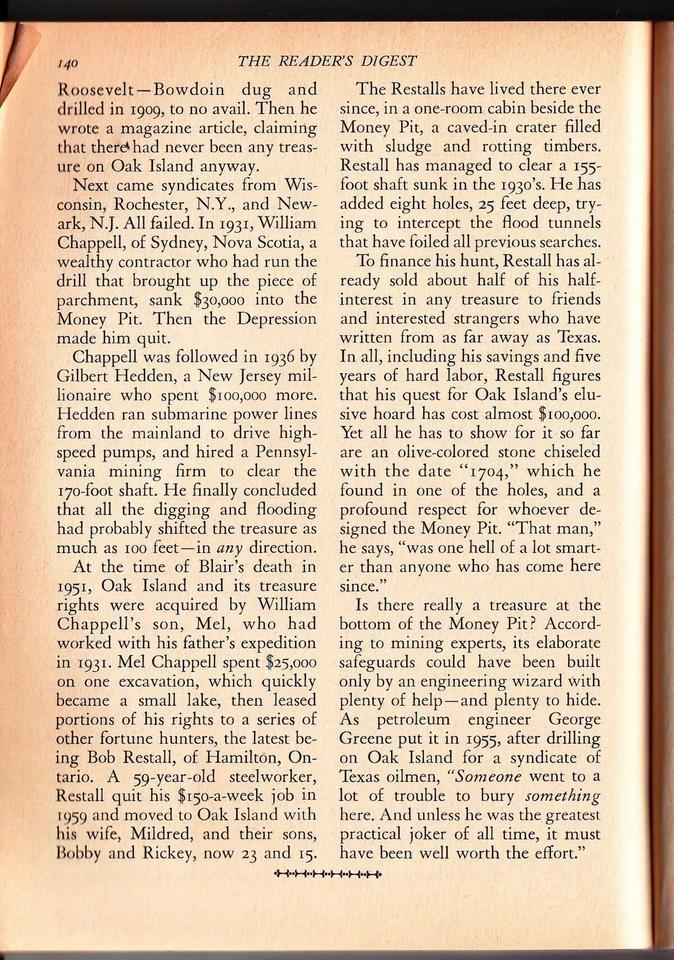
Inspiration
And if you all are so inclined for some inspiration, perhaps these links might send you in the right direction. Happy treasure hunting!
Western Treasures – An online magazine.
FMDAC – The Federation of Metal Detector & Archaeological Clubs, Inc. (FMDAC) was organized in 1984 as a legislative and educational organization and incorporated as a non-profit, non-commercial, non-partisan organization dedicated to preserving the sport/hobby of recreational metal detecting/prospecting.
SMARTER HOBBY – Getting started with a metal detector. Everything you need to know.
THE RING FINDERS – Lost rings, lost watch, lost brooch, lost pendant, lost jewelry?
TOP10METALDETECTORS – Ranked by price, vote for your favorite.
USMETALDETECTOR – Shop for metal detectors, accessories on Amazon, etc.
DISCOVER DETECTING – Discover Detecting is a site aimed at both metal detecting beginners and longtime enthusiasts.
RARE GOLD NUGGETS – Where/how to find gold, natural gold for sale, gold mining equipment, gold panning/prospecting tips.
STOUT STANDARDS – Musings from an old “beeper”.
HOBBY HELP – A beginners guide to metal detecting.
KELLY NOELLER – Metal detecting treasure hunter. Learn how to metal detect, we have the equipment and knowledge for all your treasure hunting needs. Read my blog.
UNDERCOIL.COM – A beginners guide to metal detecting.
DETECTING RESEARCH SITE – Detecting Research is your online portal to help you expand your knowledge of places to detect.
Do you want more?
I have more articles like this in my Art Index here…
ART.
Articles & Links
Master Index.
- You can start reading the articles by going HERE.
- You can visit the Index Page HERE to explore by article subject.
- You can also ask the author some questions. You can go HERE to find out how to go about this.
- You can find out more about the author HERE.
- If you have concerns or complaints, you can go HERE.
- If you want to make a donation, you can go HERE.

